
Art & architecture in Chicago
8 min read Jun 11, 2024
Many cities around the world are worth visiting for the architecture alone. A mix of Gothic, Renaissance, Baroque, and Neoclassical architecture line the boulevards of Paris. Rome is a living museum of ancient Roman ruins. Barcelona is best known for the whimsical works of Antoni Gaudi. Dubai pushes the limits with the Burj Khalifa and Burj Al Arab.
 Leica CL · 23mm · f/4.5 · 1/100 ·
ISO 100
Leica CL · 23mm · f/4.5 · 1/100 ·
ISO 100
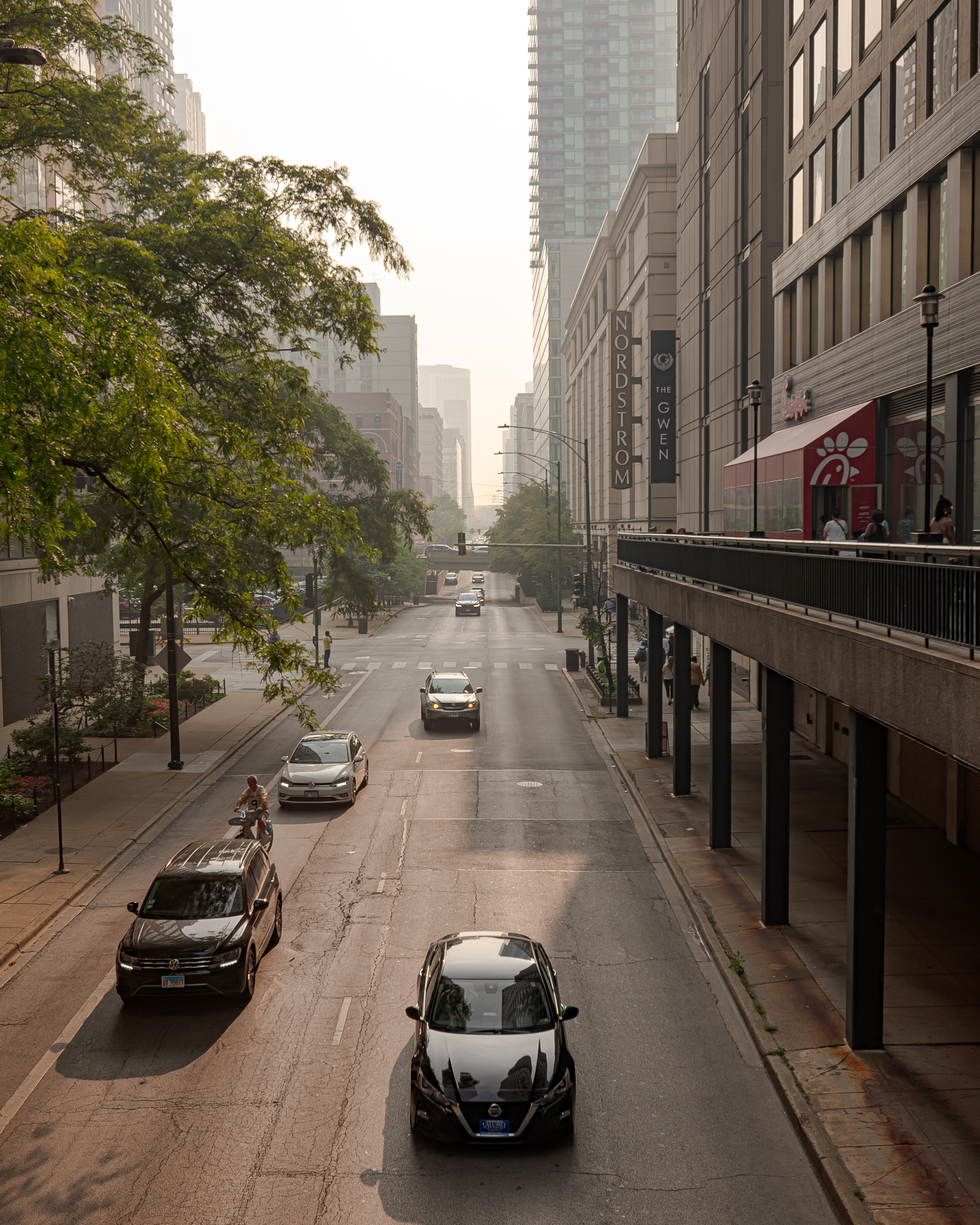 Leica CL · 23mm · f/4.5 · 1/320 ·
ISO 100
Leica CL · 23mm · f/4.5 · 1/320 ·
ISO 100
Chicago stands not just as the birthplace of the skyscraper (Home Insurance Building) and the Chicago School. The dense city center and more suburban surroundings are home to examples of nearly every architectural style of the last century.
 Leica CL · 56mm · f/1.4 · 1/800 ·
ISO 100
Leica CL · 56mm · f/1.4 · 1/800 ·
ISO 100
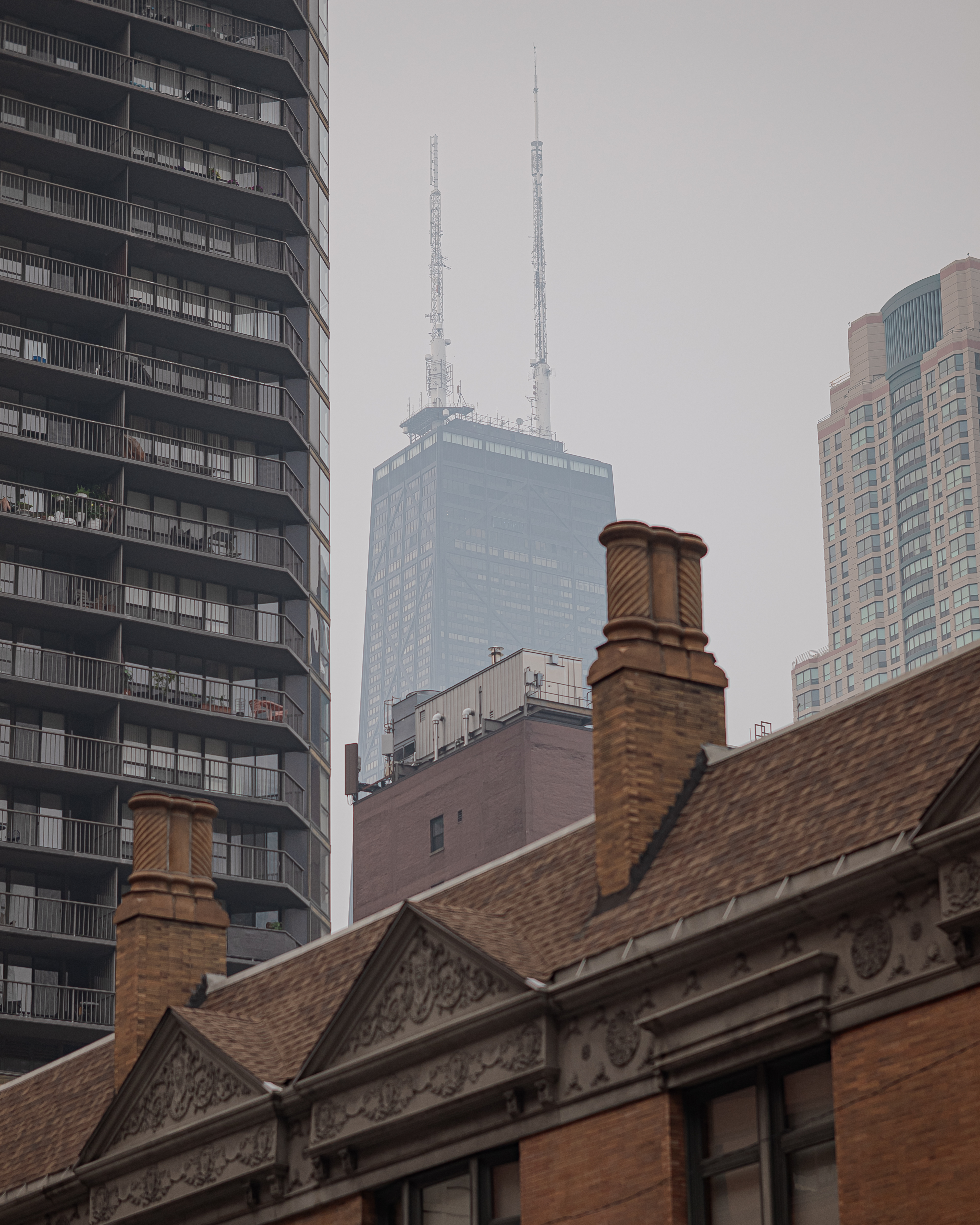 Leica CL · 56mm · f/1.4 · 1/1250
· ISO 100
Leica CL · 56mm · f/1.4 · 1/1250
· ISO 100
I had the privilege of spending a week there for work last year. Even though we happened to be there during abysmal air due to the 2023 Canadian wildfires, I found time to enjoy some architecture and art
Architecture boat tour
Architecture-focused boat tours are a must when in Chicago. There is no other city in the world that has as many enormous skyscrapers flanking a river.
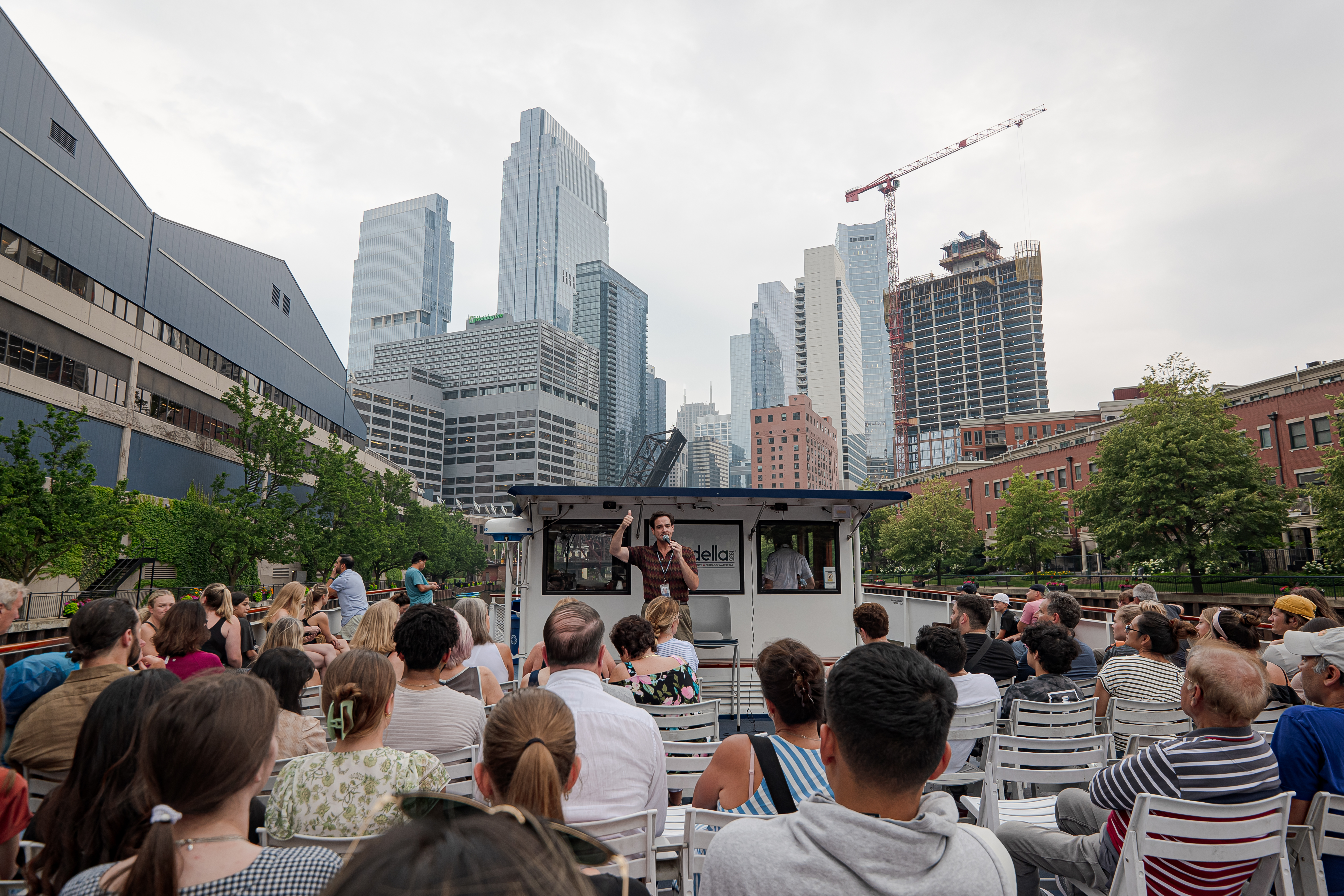 Leica CL · 13mm · f/3.9 · 1/100 ·
ISO 100
Leica CL · 13mm · f/3.9 · 1/100 ·
ISO 100
In most cities, skyscrapers can either be seen from right below or from the distance. In Chicago, the waterline is below ground level for most buildings and the river is quite wide. The result is the ability to see the entirety of tall buildings from a comfortable angle.
 Leica CL · 13mm · f/3.9 · 1/40 ·
ISO 100
Leica CL · 13mm · f/3.9 · 1/40 ·
ISO 100
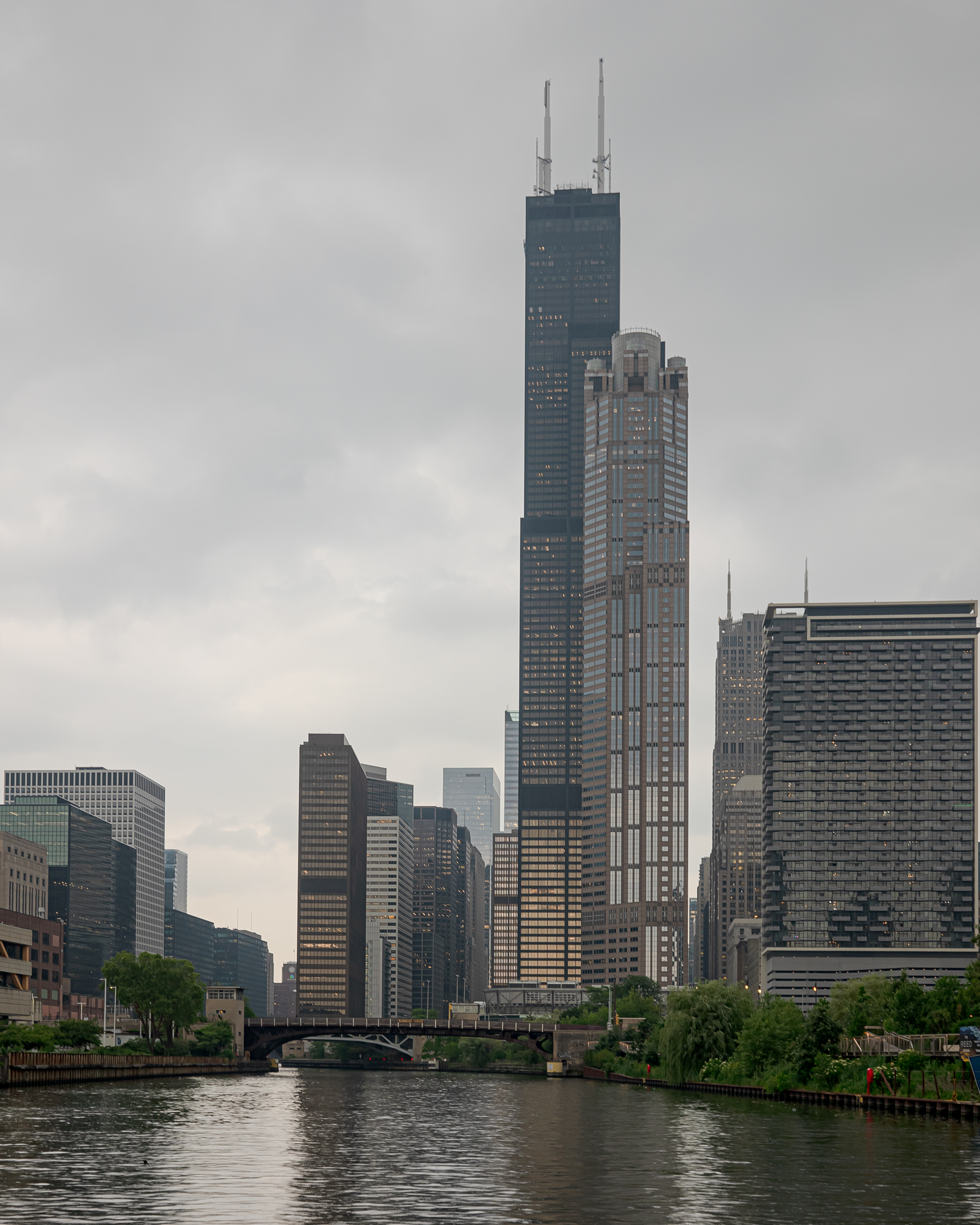 Leica CL · 23mm · f/4.5 · 1/60 ·
ISO 125
Leica CL · 23mm · f/4.5 · 1/60 ·
ISO 125
I found our guide to be just the right mix of humorous and informative. I’ll be taking another ride the next chance I get.
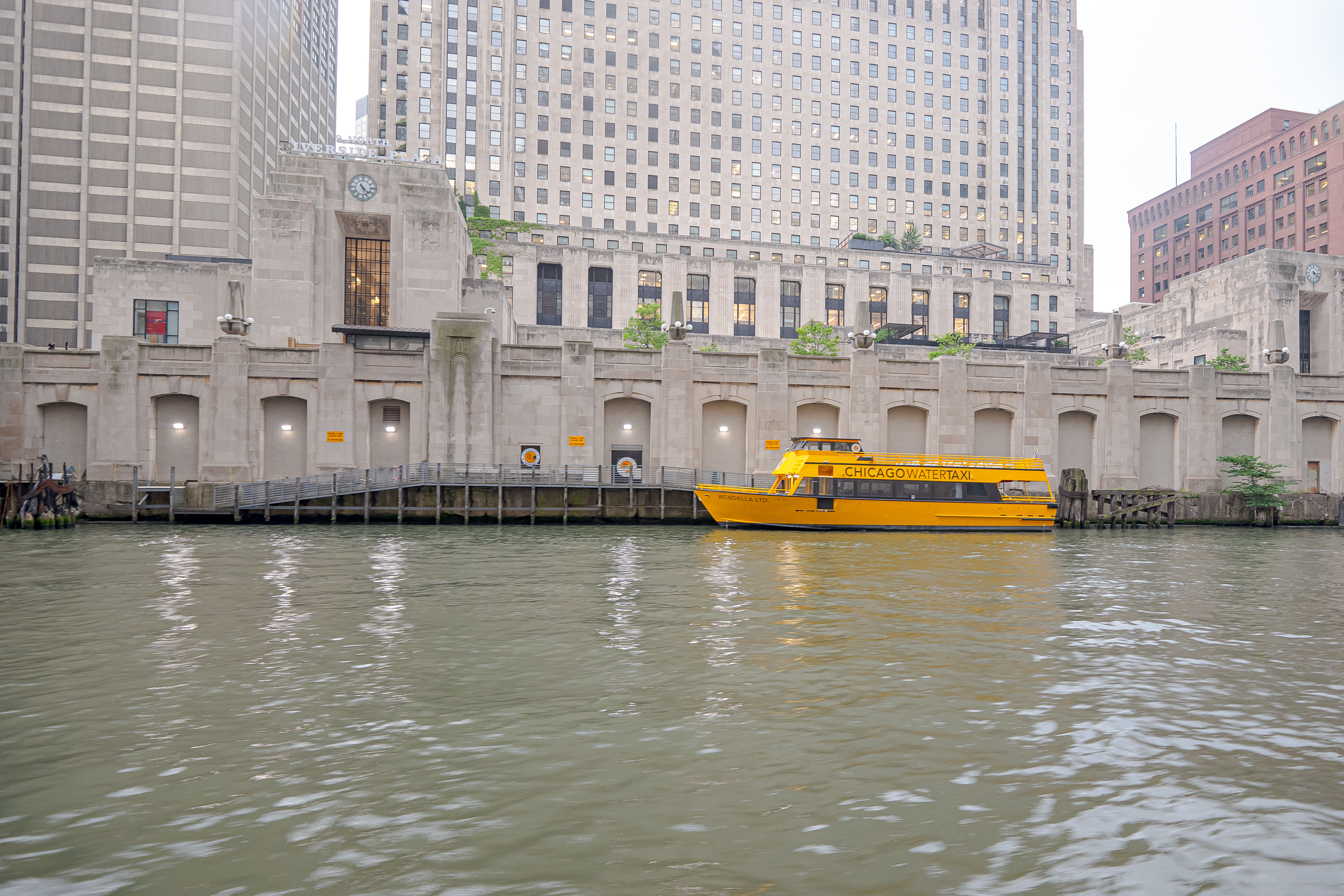 Leica CL · 11mm · f/3.5 · 1/30 ·
ISO 500
Leica CL · 11mm · f/3.5 · 1/30 ·
ISO 500
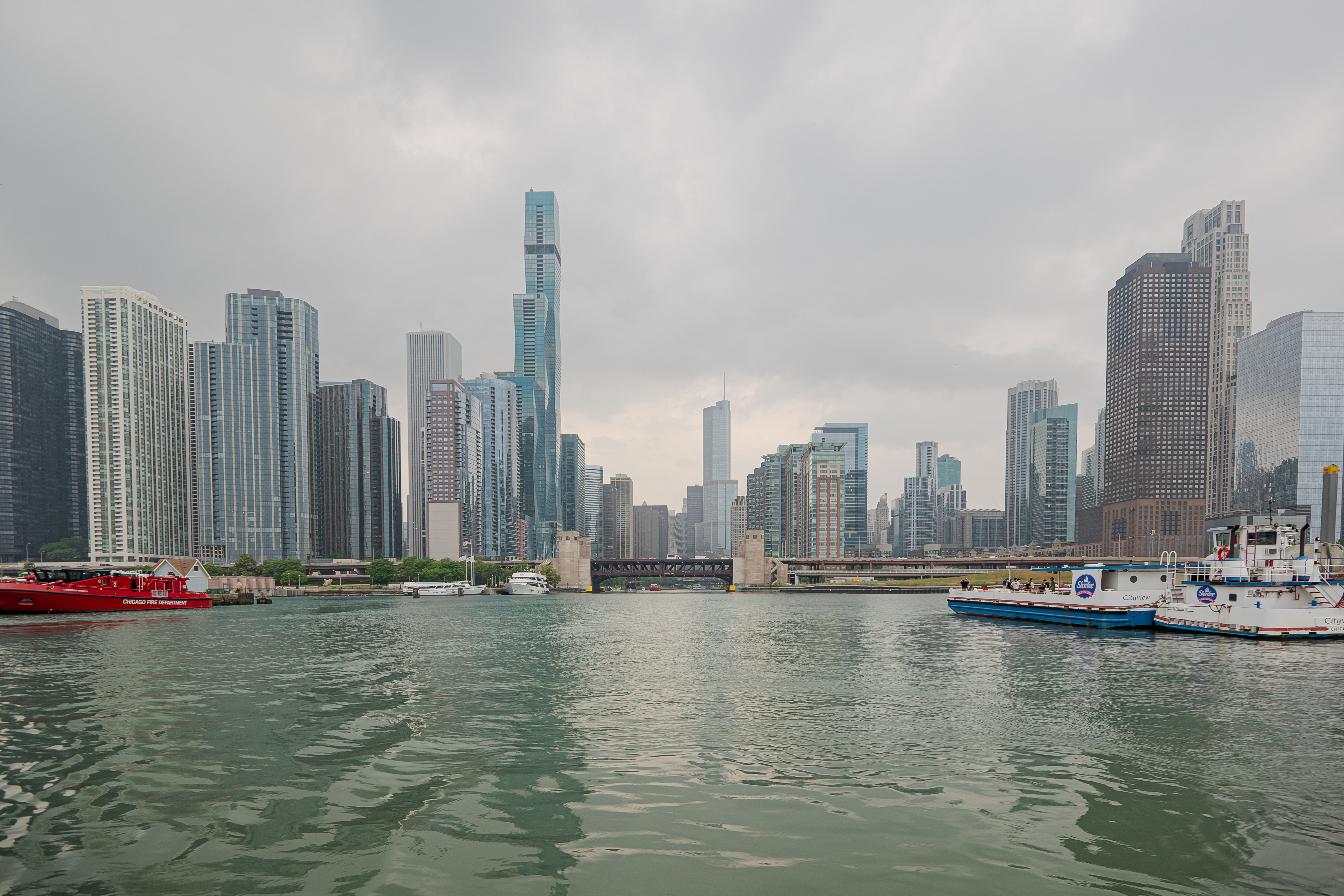 Leica CL · 11mm · f/3.5 · 1/160 ·
ISO 100
Leica CL · 11mm · f/3.5 · 1/160 ·
ISO 100
Chicago Architecture Center
At the south eastern corner of the historic DuSable Bridge lies the Chicago Architecture Center. It’s the one place to visit for anyone wanting to understand Chicago’s vast architectural legacy. It’s located in at the ground floor of 111 East Wacker (One Illinois Center), a International Style skyscraper designed by Mies van der Rohe.
 Leica CL · 11mm · f/4.5 · 1/160 ·
ISO 100
Leica CL · 11mm · f/4.5 · 1/160 ·
ISO 100
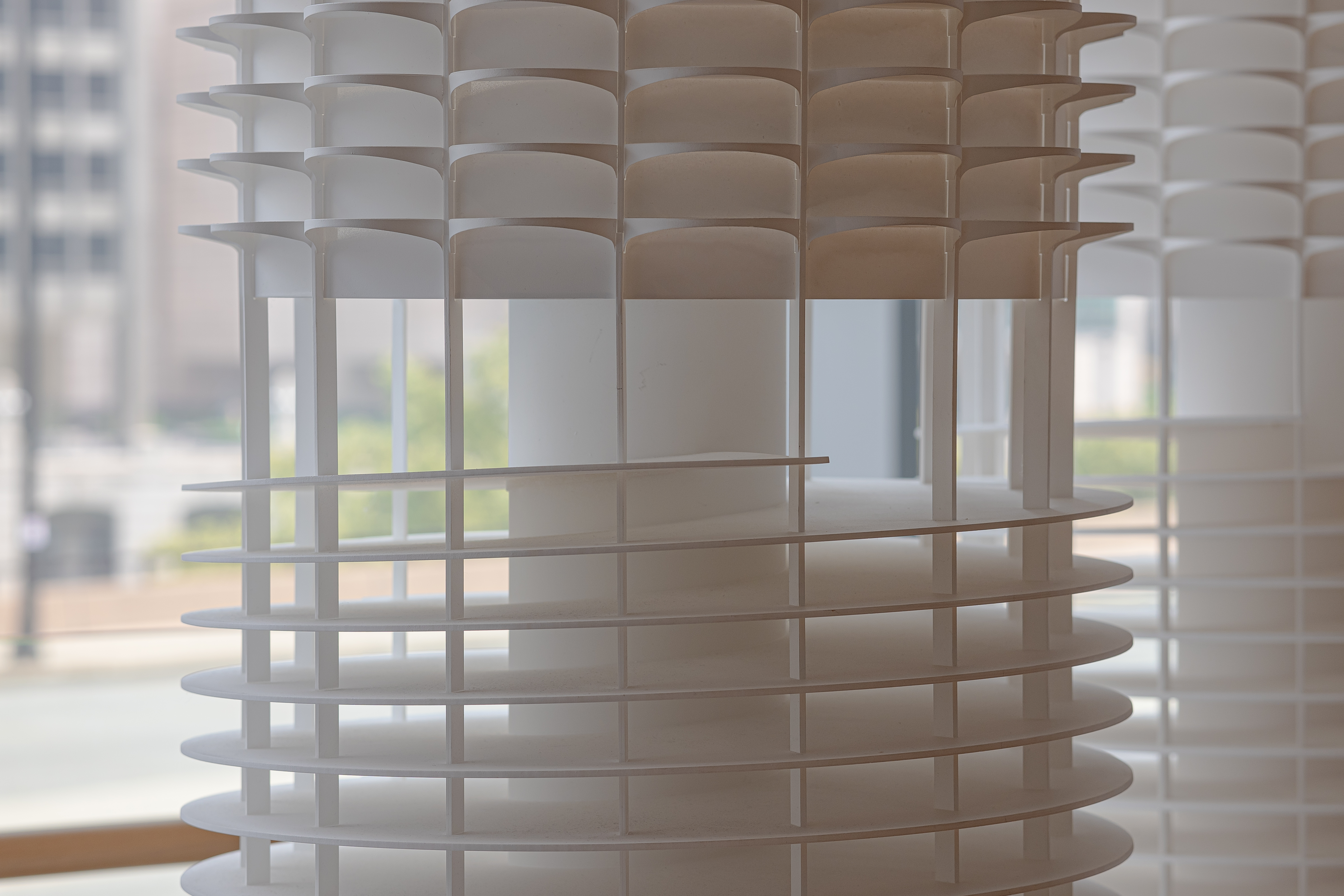 Leica CL · 56mm · f/4.5 · 1/160 ·
ISO 160
Leica CL · 56mm · f/4.5 · 1/160 ·
ISO 160
Its most notable exhibit is a massive scale model of Chicago. Graphics are overlayed using projection mapping.
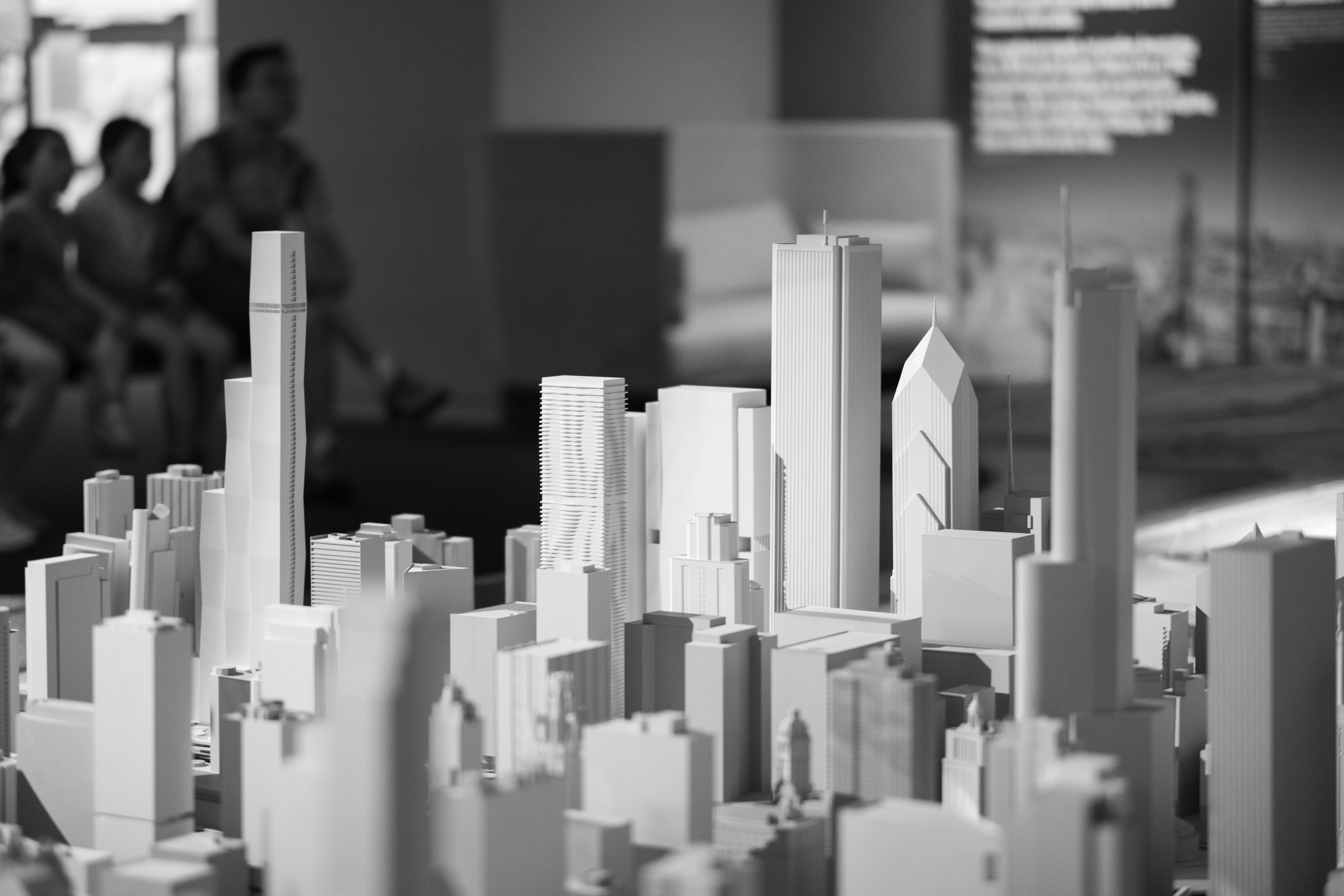 Leica CL · 56mm · f/1.4 · 1/160 ·
ISO 1250
Leica CL · 56mm · f/1.4 · 1/160 ·
ISO 1250
I was there as the CAC was exhibiting Reframed: The Future of Cities in Wood. The exhibition is dedicated to mass timber, a building technology that is picking up steam.
Though its exact environmental impacts have been hard to measure, it is thought to be better than steel and concrete, which both result in massive carbon emissions.
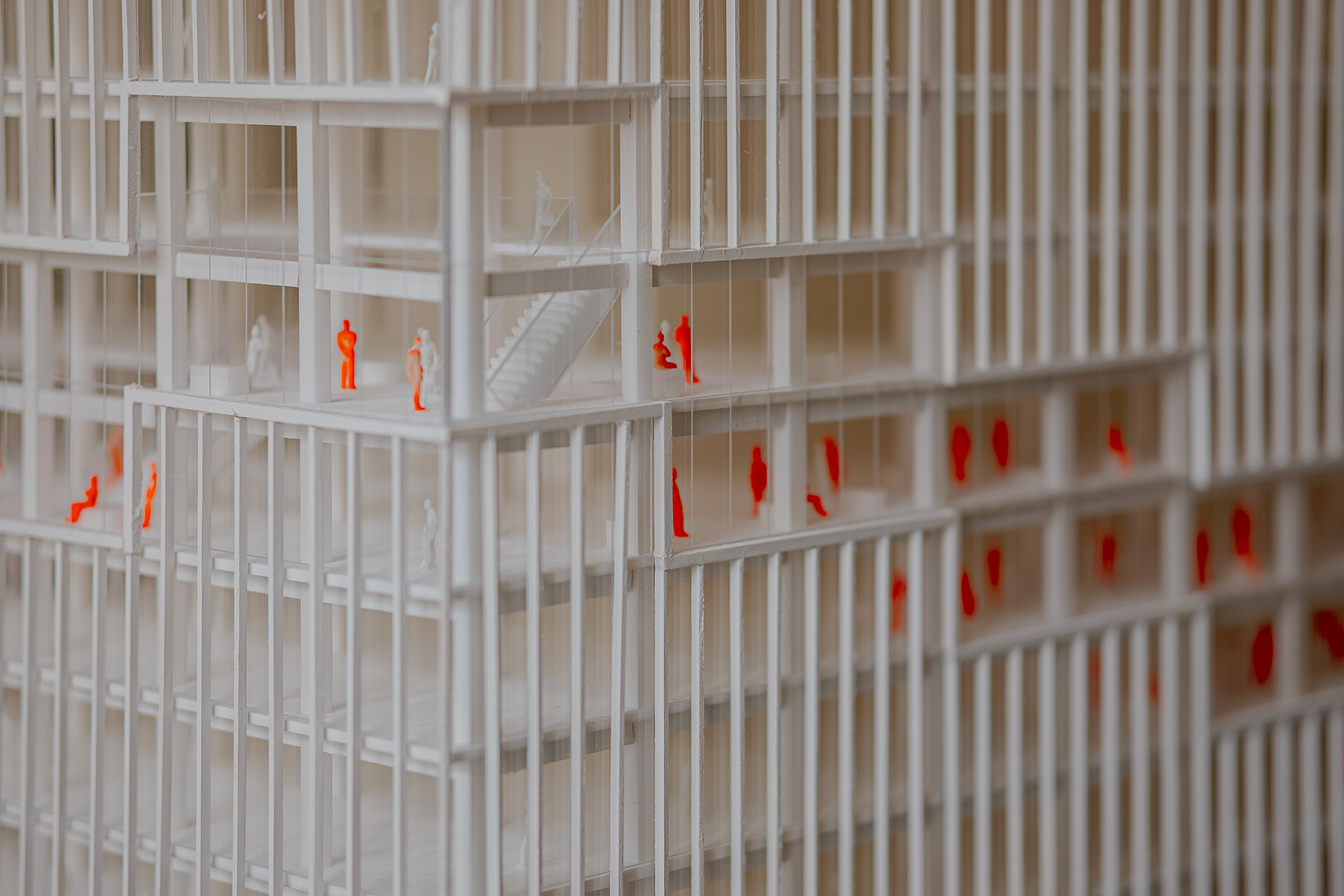 Leica CL · 56mm · f/1.4 · 1/400 ·
ISO 100
Leica CL · 56mm · f/1.4 · 1/400 ·
ISO 100
 Leica CL · 56mm · f/2 · 1/160 ·
ISO 400
Leica CL · 56mm · f/2 · 1/160 ·
ISO 400
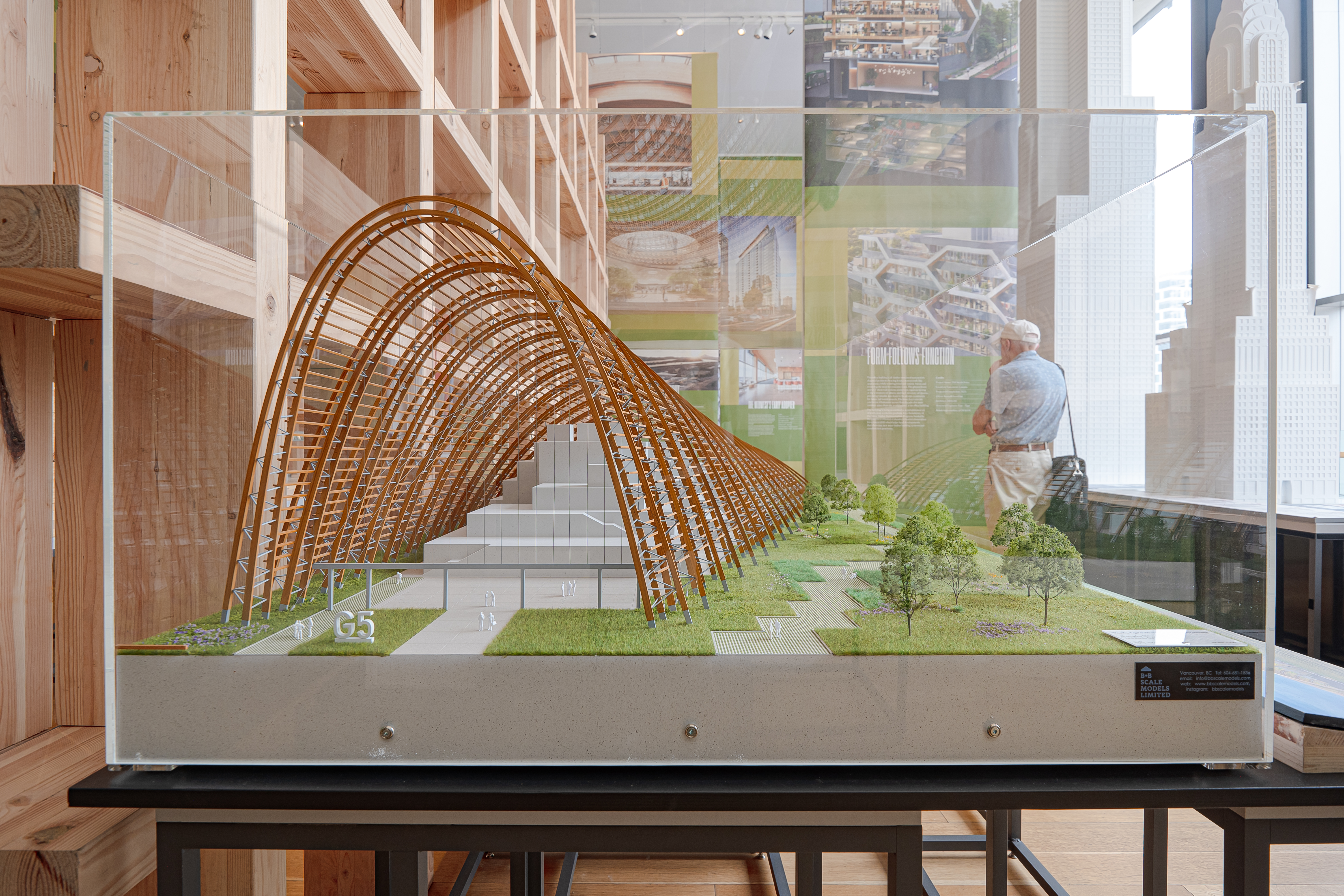 Leica CL · 11mm · f/4.5 · 1/30 ·
ISO 125
Leica CL · 11mm · f/4.5 · 1/30 ·
ISO 125
I loved photographing the scale models, which were themselves constructed from wood.
A walk up the Magnificent Mile
An upscale section of Michigan Avenue, the Magnificent Mile is a bit like Fifth Avenue in New York. It’s home both to tall skyscrapers and plenty of top retailers. I walked up and down its length during spare hours.
 Leica CL · 15mm · f/4 · 1/200 ·
ISO 100
Leica CL · 15mm · f/4 · 1/200 ·
ISO 100
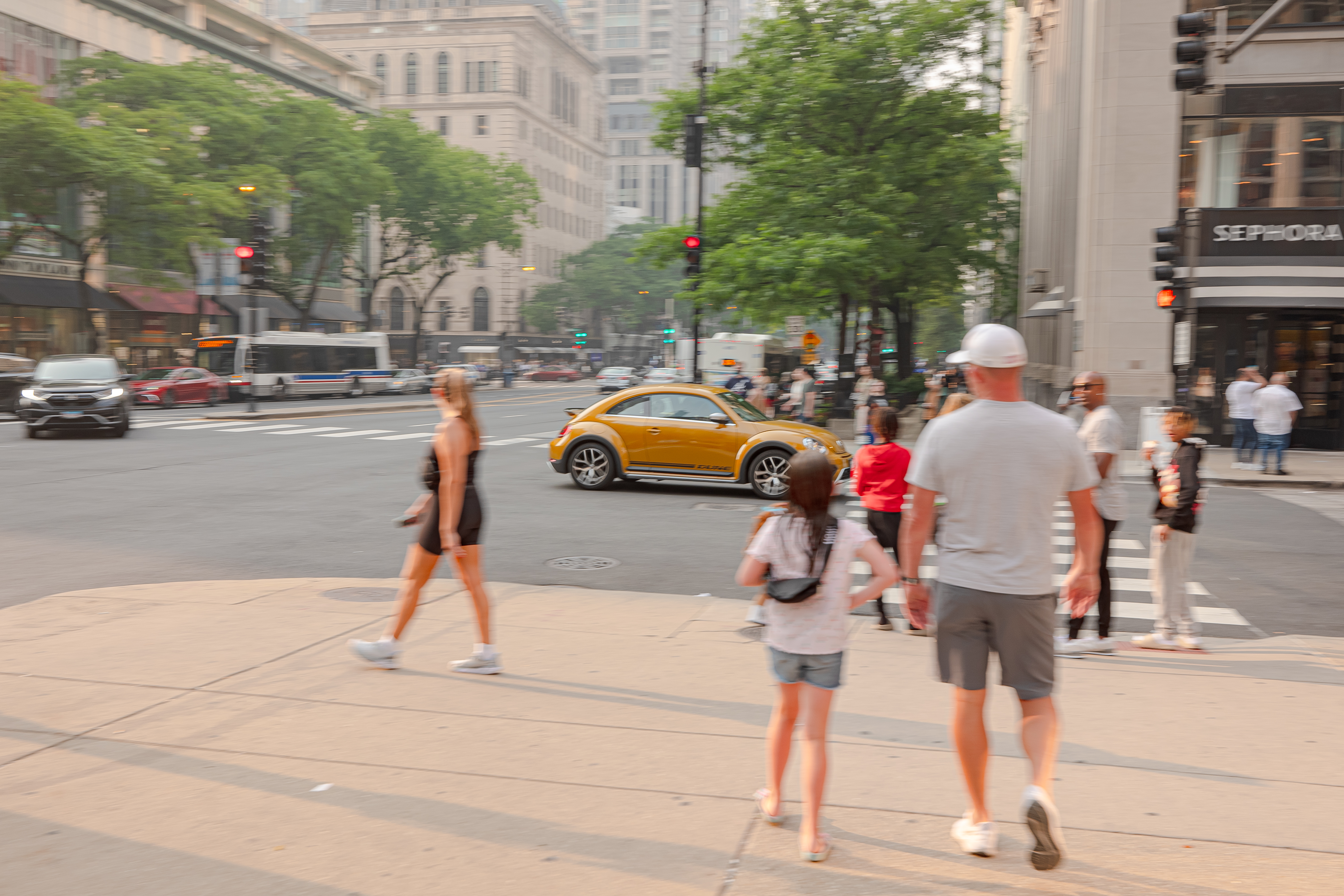 Leica CL · 23mm · f/4.5 · 1/100 ·
ISO 100
Leica CL · 23mm · f/4.5 · 1/100 ·
ISO 100
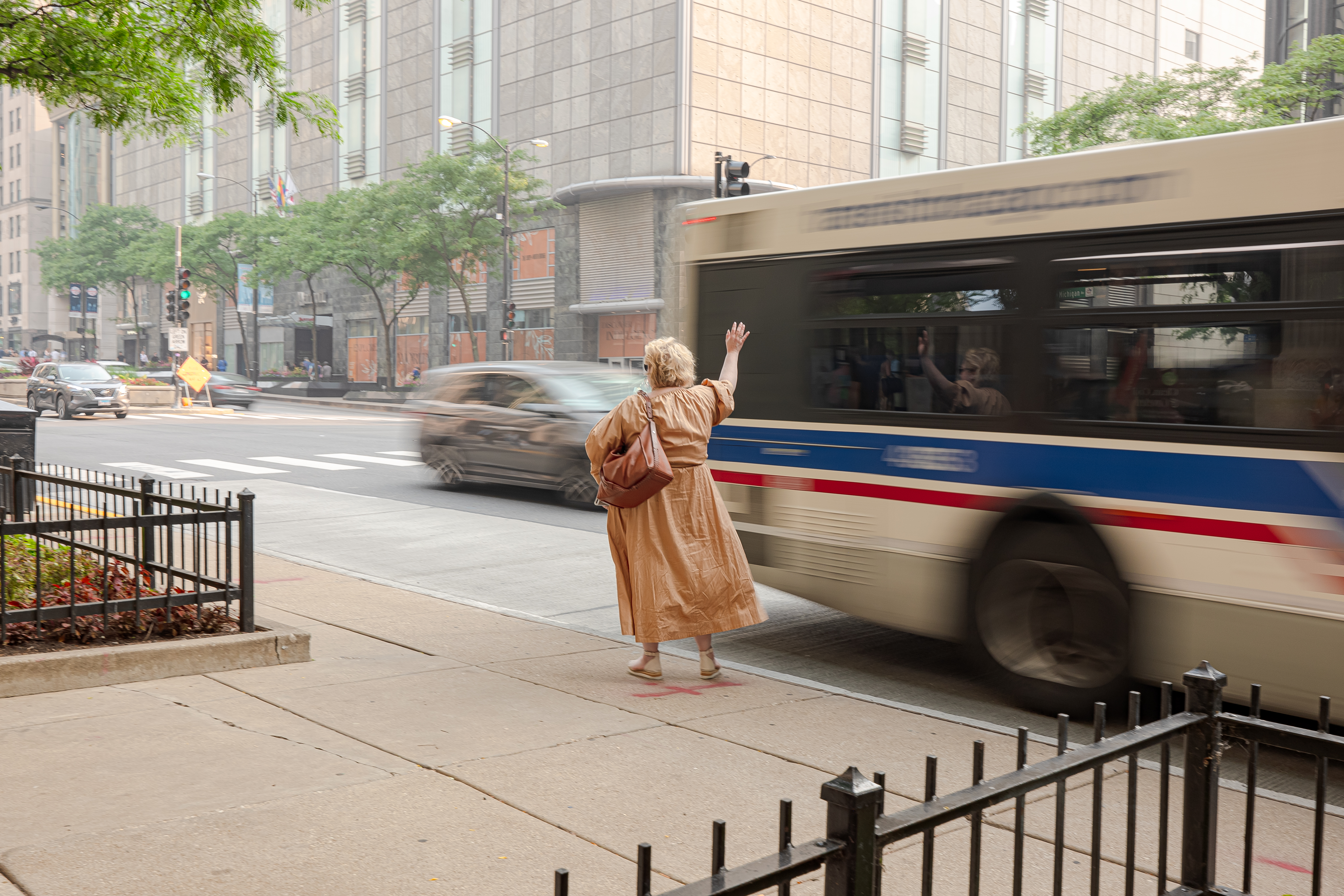 Leica CL · 23mm · f/7.1 · 1/15 ·
ISO 100
Leica CL · 23mm · f/7.1 · 1/15 ·
ISO 100
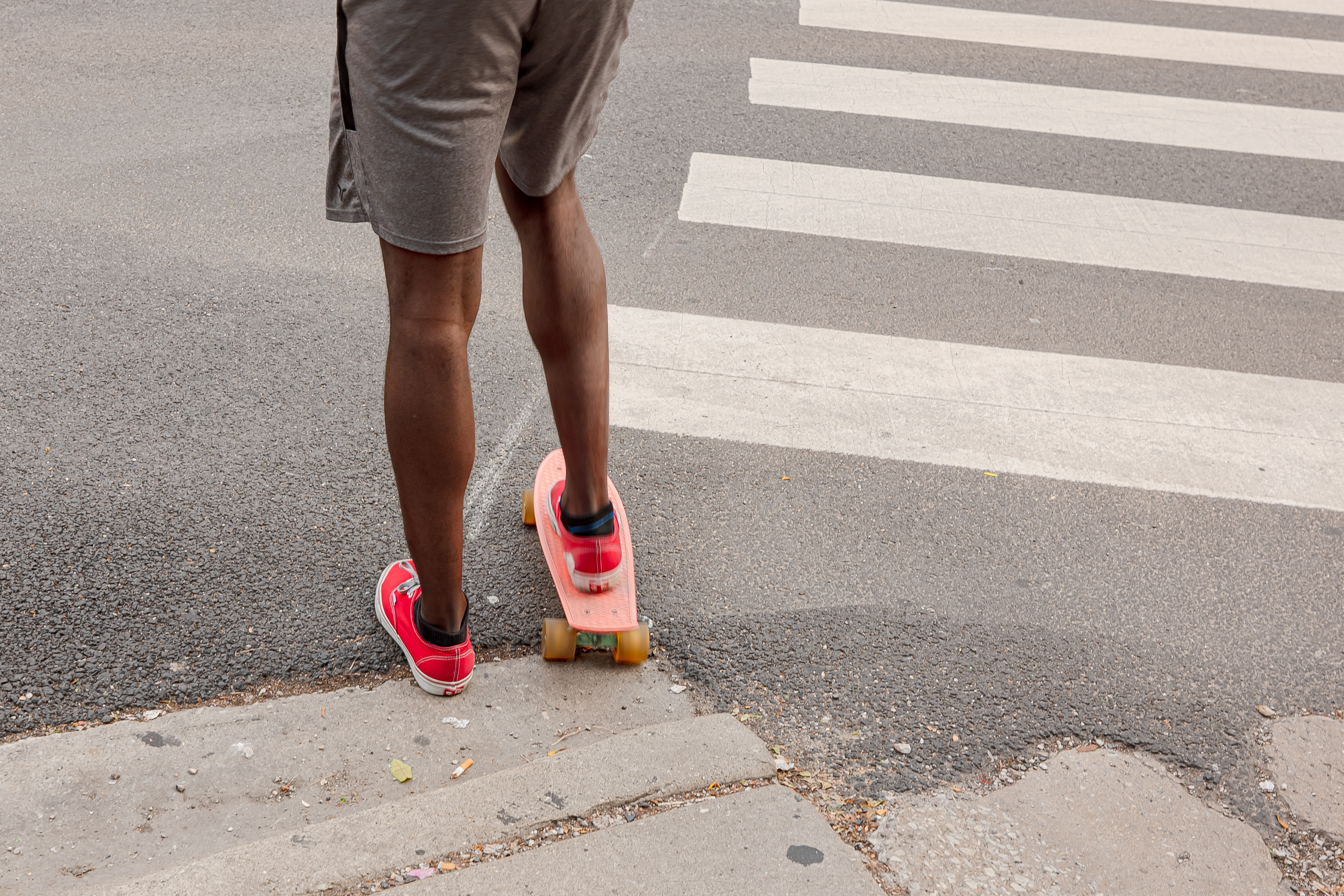 Leica CL · 23mm · f/4.5 · 1/60 ·
ISO 160
Leica CL · 23mm · f/4.5 · 1/60 ·
ISO 160
Apple Michigan Avenue
Just across the river from the Chicago Architecture Center is Apple Michigan Avenue. It occupies Pioneer Court, believed to be the location of Jean Baptiste Point du Sable’s first residence and trading post. Historians consider it the first non-native residence in Chicago.
 Leica CL · 23mm · f/4.5 · 1/60 ·
ISO 400
Leica CL · 23mm · f/4.5 · 1/60 ·
ISO 400
Before Apple arrived, it was a courtyard far above the river’s edge. Foster + Partners extensively modified the space. A staircase was added to unite the court above to the path running along the river a few stories below. The store sits on the stairs as if a bubble, with glass forming a membrane between the store and the outside.
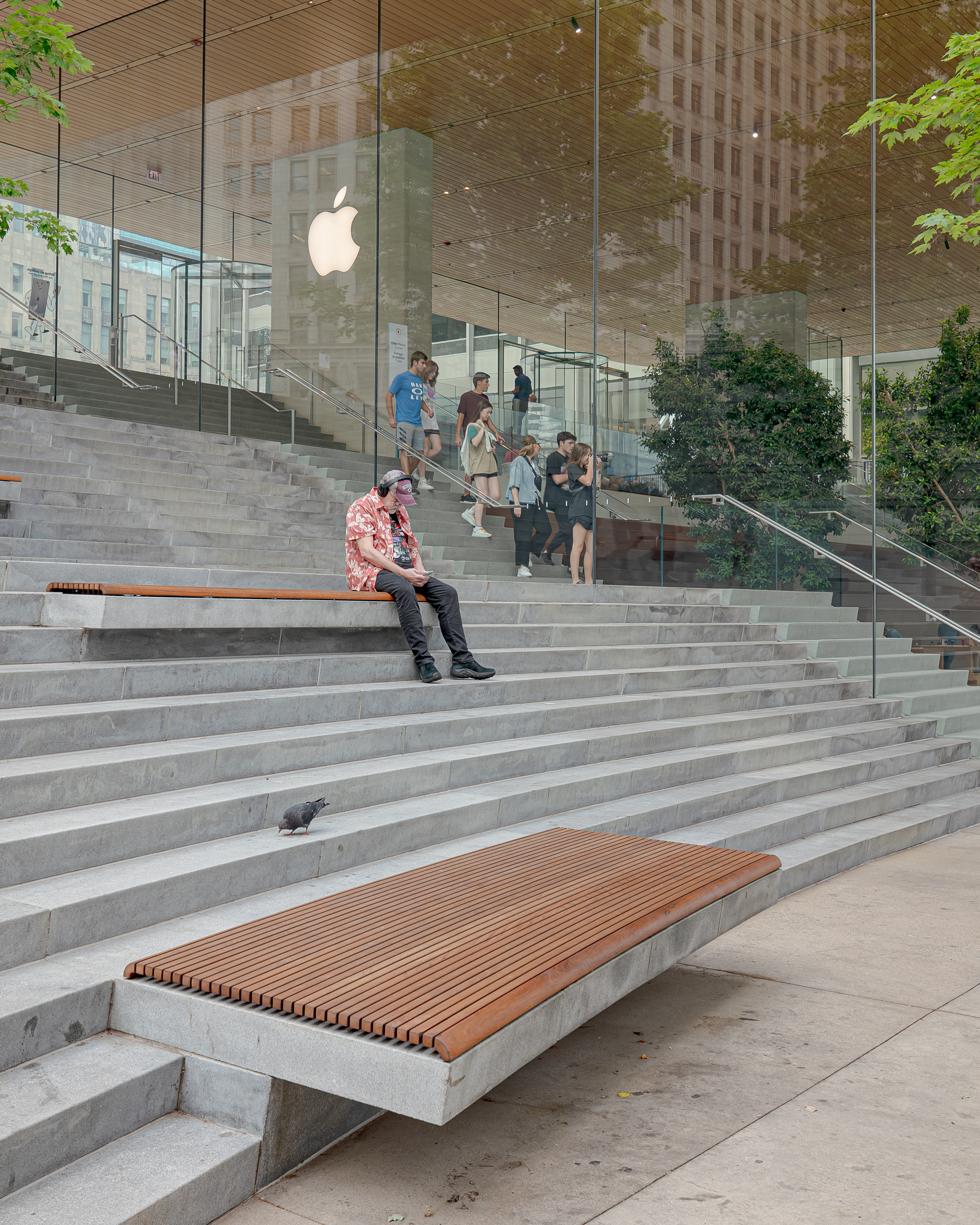 Leica CL · 23mm · f/4.5 · 1/60 ·
ISO 125
Leica CL · 23mm · f/4.5 · 1/60 ·
ISO 125
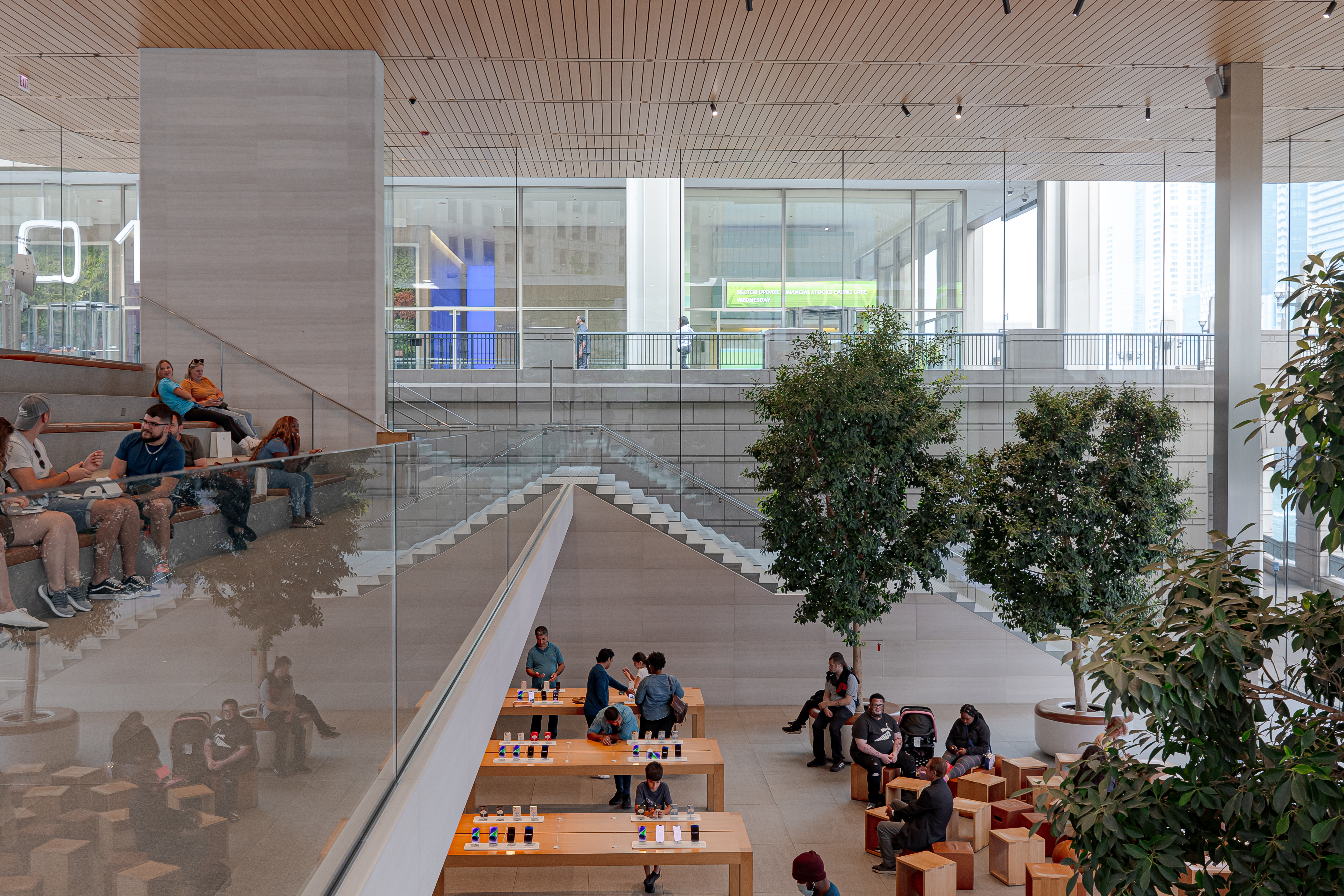 Leica CL · 23mm · f/4.5 · 1/60 ·
ISO 250
Leica CL · 23mm · f/4.5 · 1/60 ·
ISO 250
A carbon fiber roof resembling one of Apple’s computers floats above, with wood forming the ceiling underneath. The airiness of the building makes it both disappear and stand out.
 Leica CL · 11mm · f/3.5 · 1/50 ·
ISO 100
Leica CL · 11mm · f/3.5 · 1/50 ·
ISO 100
 Leica CL · 23mm · f/4.5 · 1/60 ·
ISO 320
Leica CL · 23mm · f/4.5 · 1/60 ·
ISO 320
Though I live close to the similar Apple Park Visitor Center, I couldn’t miss an opportunity to visit this store.
Tribune Tower
Just north of the Apple Store is Tribune Tower. In its facade are embedded fragments from many of the most famous buildings in the world like the Taj Mahal, Parthenon, and Hagia Sophia. An iconic example of neo-Gothic architecture, it was for nearly a century home to the Chicago Tribune. In 2018, it was converted into luxury residences.
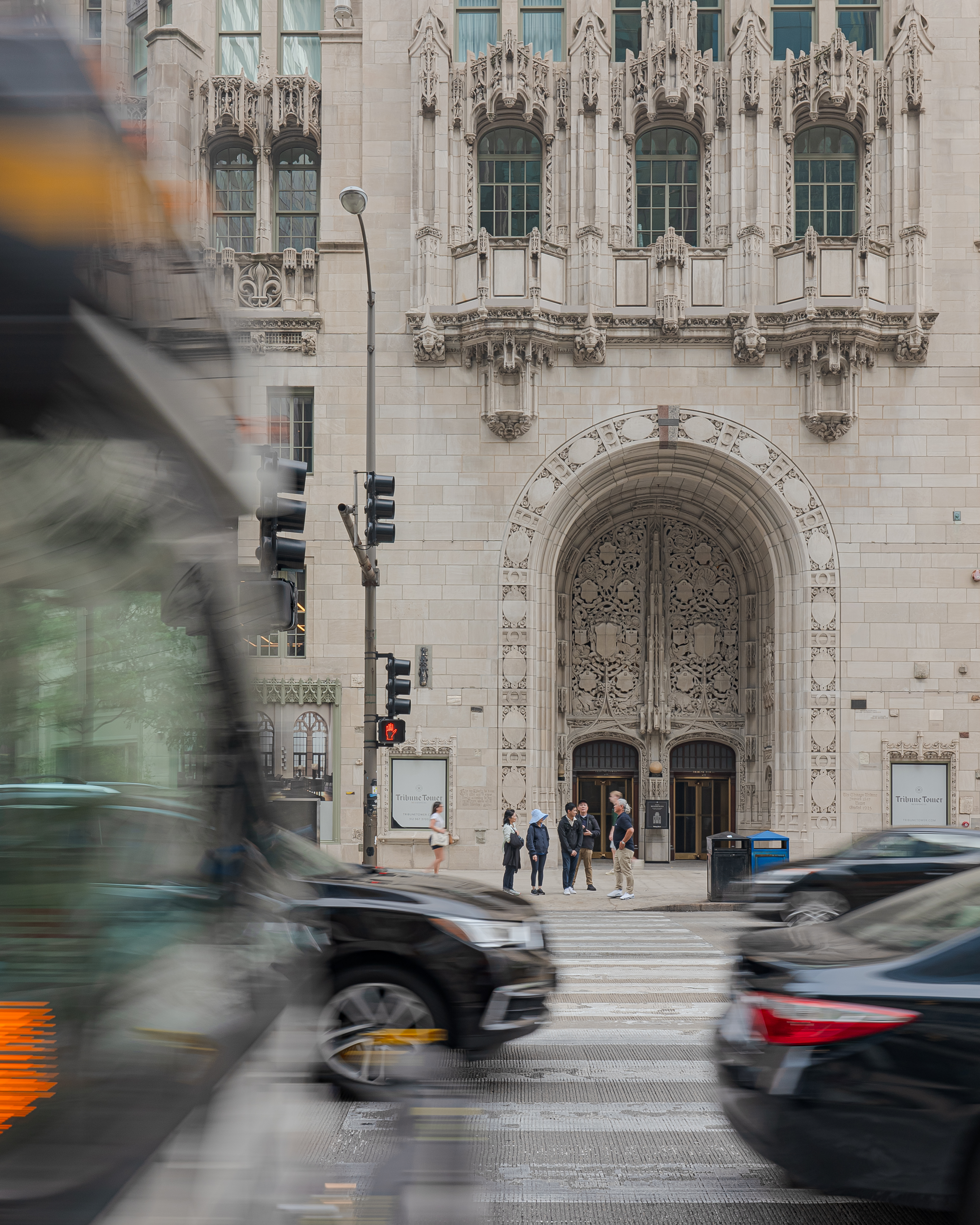 Leica CL · 23mm · f/9 · 1/20 ·
ISO 100
Leica CL · 23mm · f/9 · 1/20 ·
ISO 100
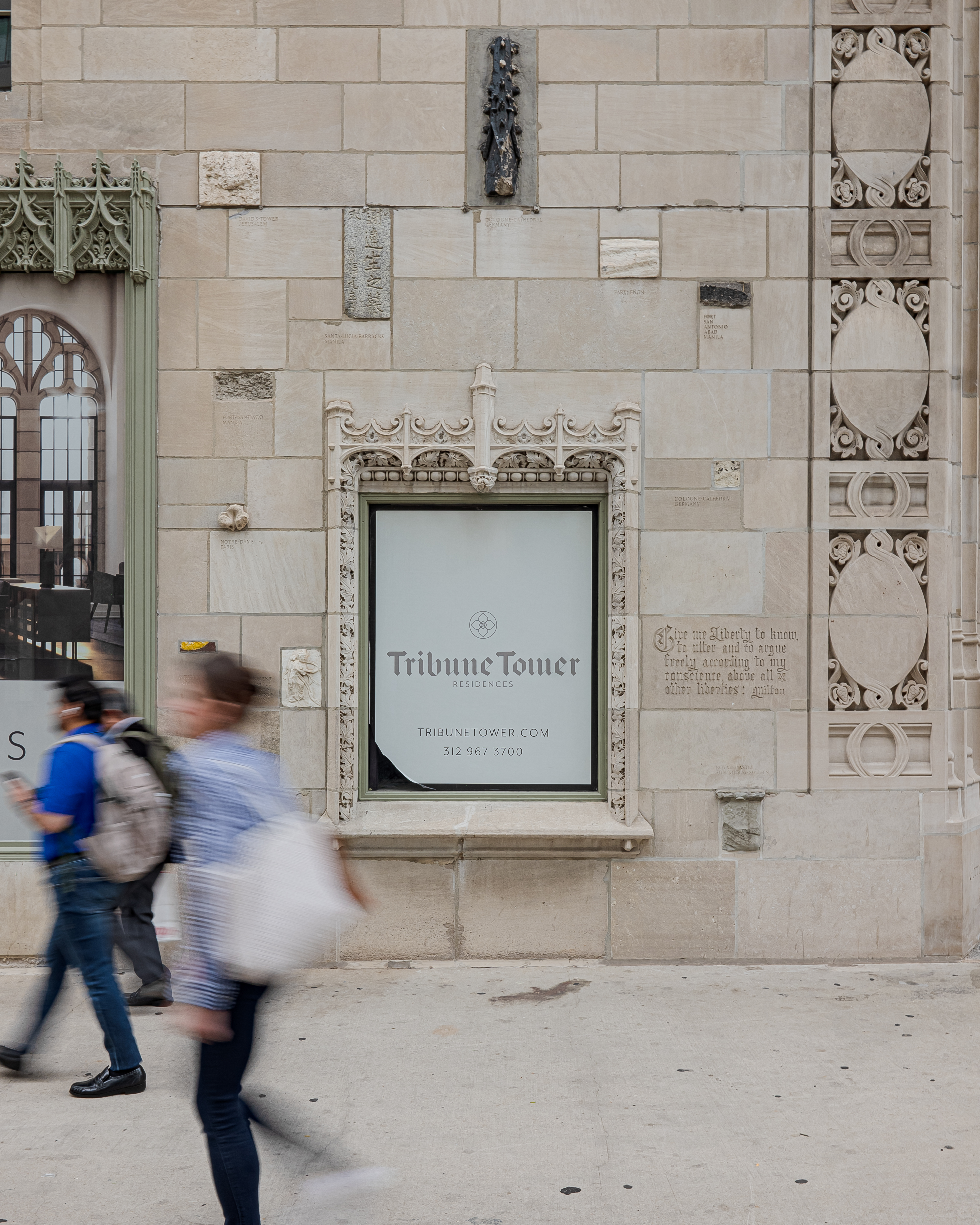 Leica CL · 17mm · f/11 · 1/15 ·
ISO 100
Leica CL · 17mm · f/11 · 1/15 ·
ISO 100
Chicago Water Tower
This limestone tower was originally built in the late 19th century to house water pumping machinery. It gained notoriety when it was one of very few buildings that survived the Great Chicago Fire.
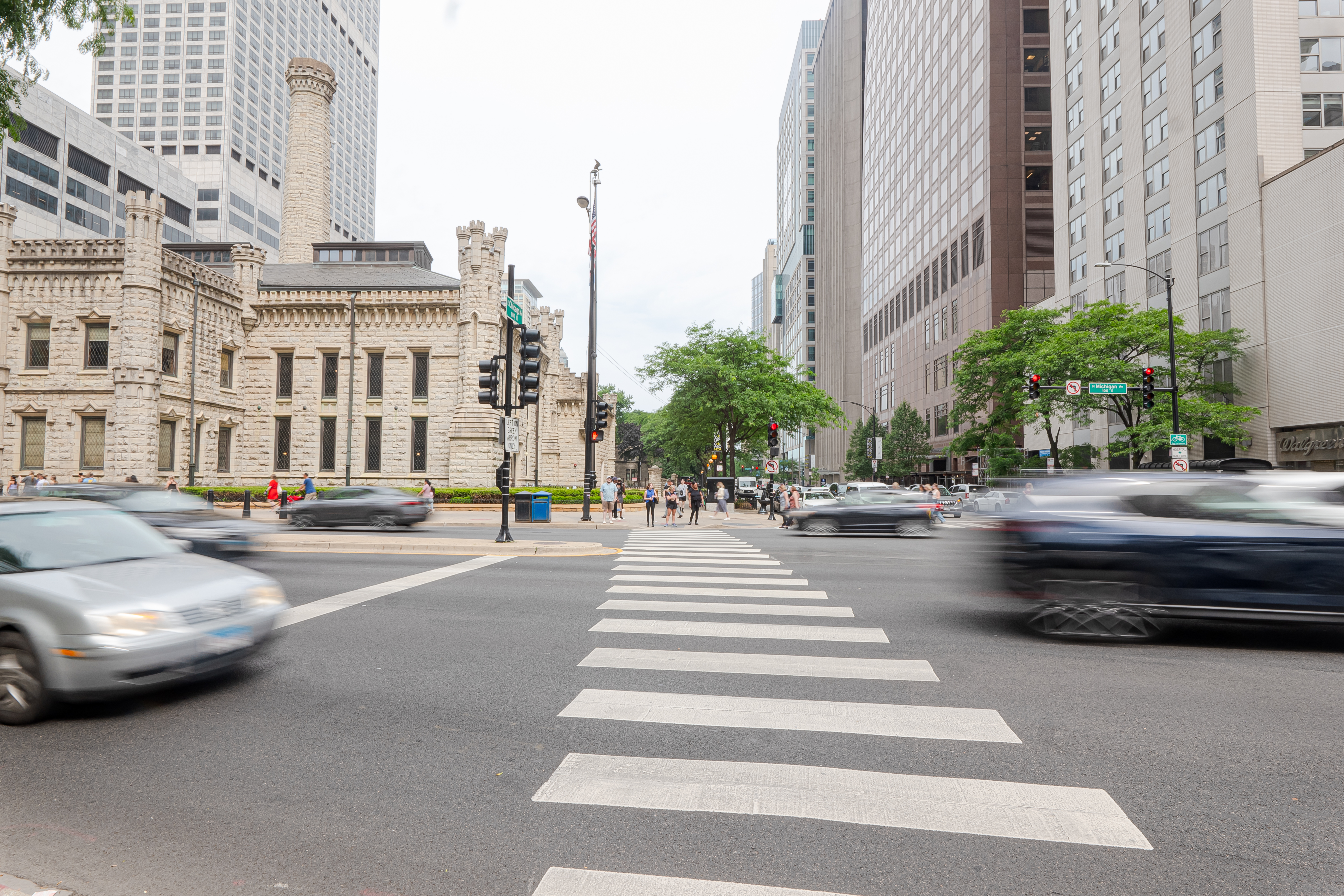 Leica CL · 13mm · f/16 · 1/15 ·
ISO 100
Leica CL · 13mm · f/16 · 1/15 ·
ISO 100
 Leica CL · 14mm · f/4 · 1/1250 ·
ISO 100
Leica CL · 14mm · f/4 · 1/1250 ·
ISO 100
Across Michigan Ave, the former engine house remains as well. It now houses a theater, visitor center, and public library branch.
Museum of Contemporary Art
The next block over from the water works is one of the world’s largest contemporary art museums, the Museum of Contemporary Art Chicago. This museum was the site of Frida Kahlo’s first US exhibition and Jeff Koon’s first solo exhibition.
The current building was designed by Josef Paul Kleihues. With hints of modernism and Chicago architecture, the building doesn’t scream for attention.
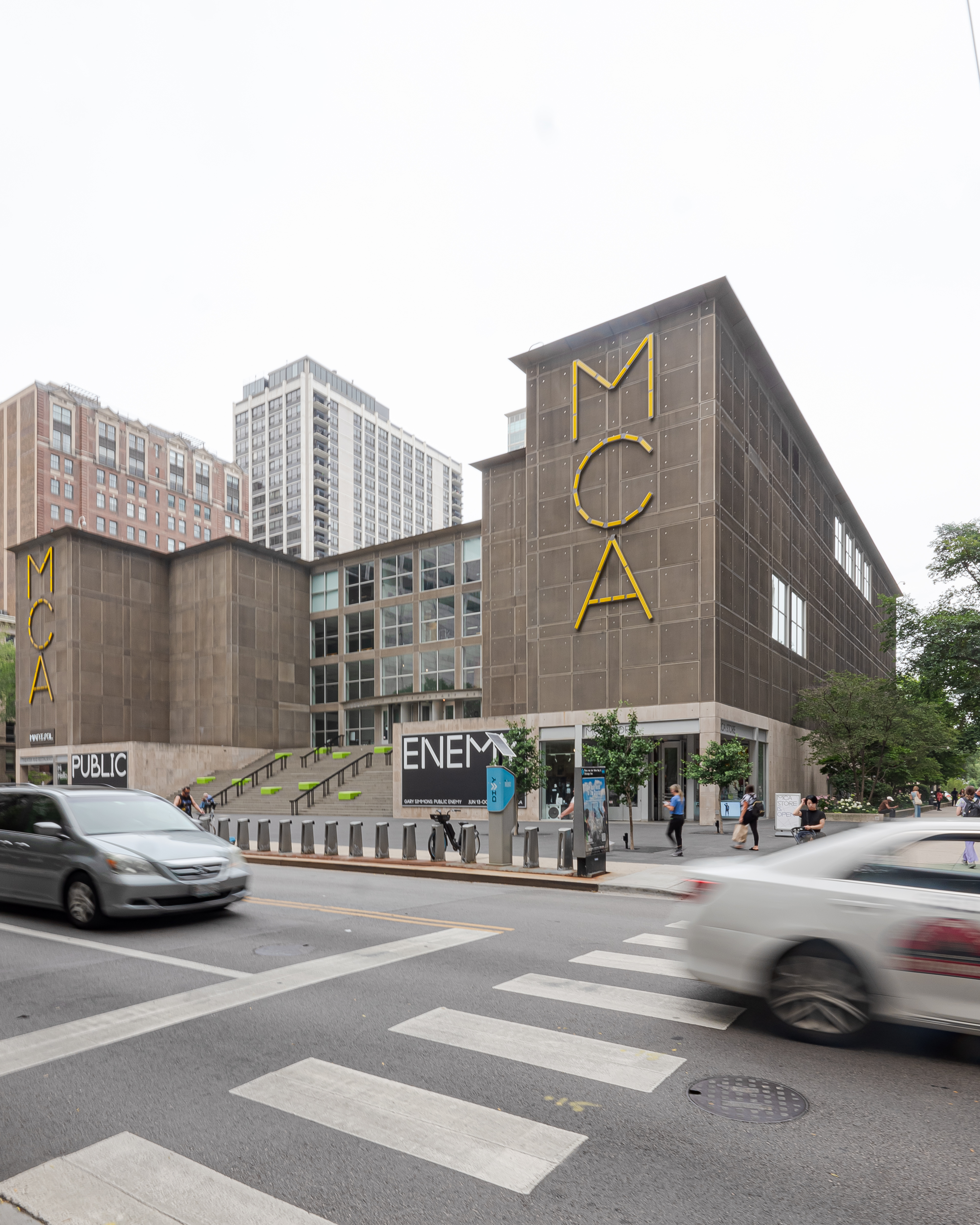 Leica CL · 11mm · f/16 · 1/15 ·
ISO 100
Leica CL · 11mm · f/16 · 1/15 ·
ISO 100
Two monolith-like wings extend out to frame the central staircase and windowed facade. The MCA logo (designed in 2015) is drawn vertically using tube-like LED lights in a style reminiscent of artist Dan Flavin’s florescent tubes.
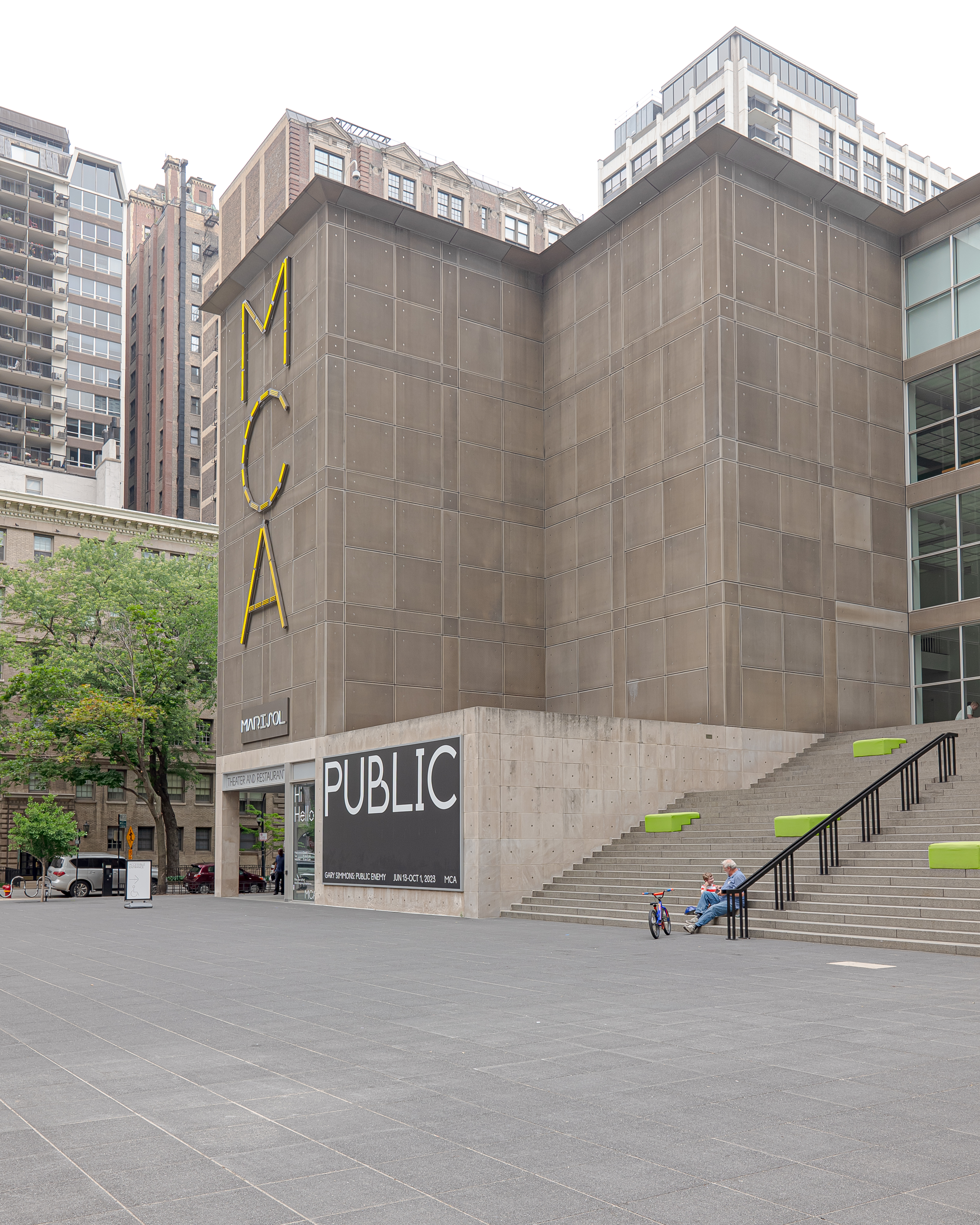 Leica CL · 17mm · f/5 · 1/100 ·
ISO 100
Leica CL · 17mm · f/5 · 1/100 ·
ISO 100
The major exhibition during my time there was a comprehensive retrospective on the work of Gary Simmons, called Gary Simmons: Public Enemy. This LA-based artist is best known for employing conceptual art to investigate questions of race, class, and gender identity in US life and culture.
 Leica CL · 18mm · f/5.6 · 1/50 ·
ISO 320
Leica CL · 18mm · f/5.6 · 1/50 ·
ISO 320
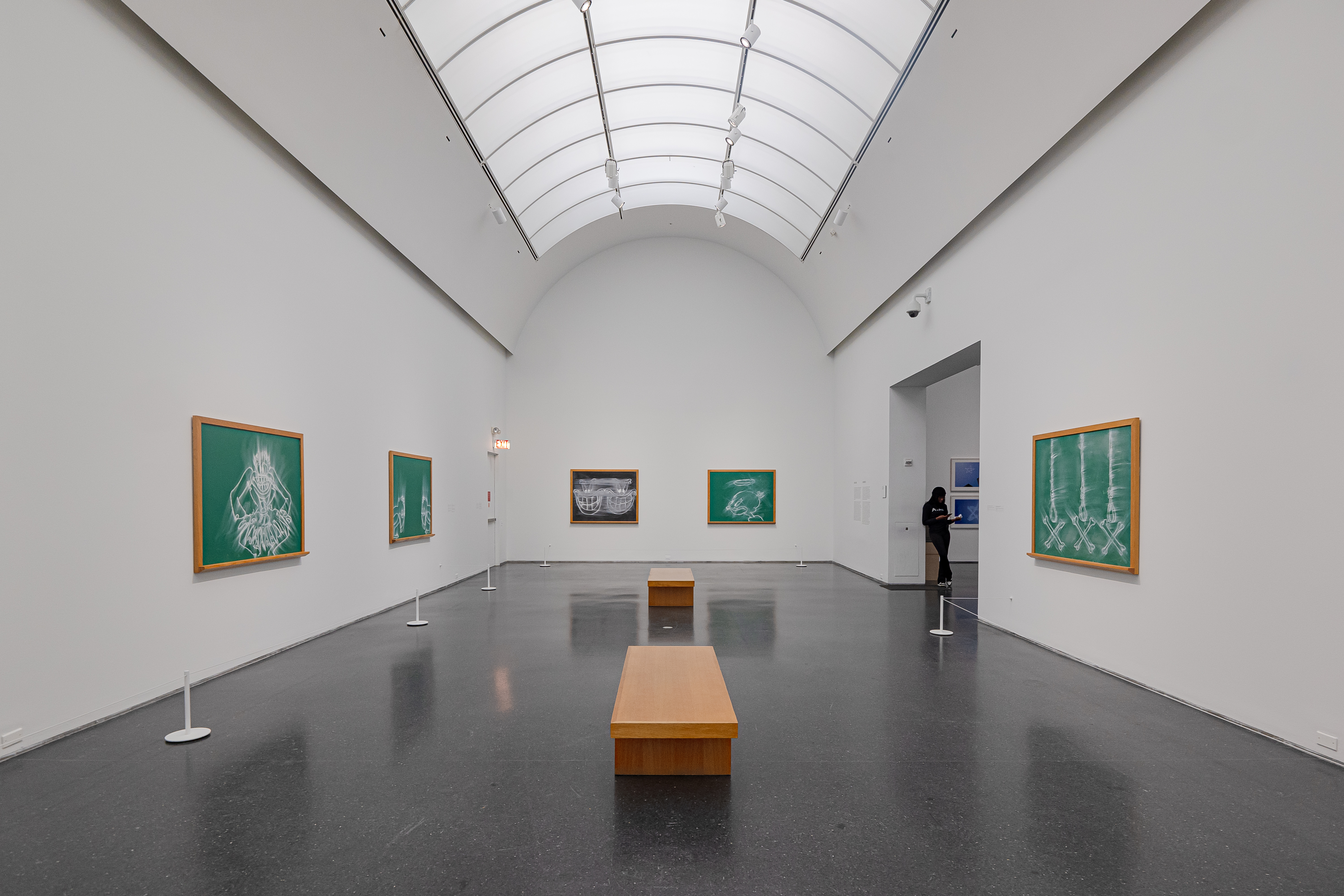 Leica CL · 11mm · f/5.6 · 1/30 ·
ISO 500
Leica CL · 11mm · f/5.6 · 1/30 ·
ISO 500
I was most drawn to his “erasure drawings”. On a solid-colored backdrop, he draws line-drawings using chalk. He then uses his hand to blur the drawings, giving them a sense of motion and ephemerality.
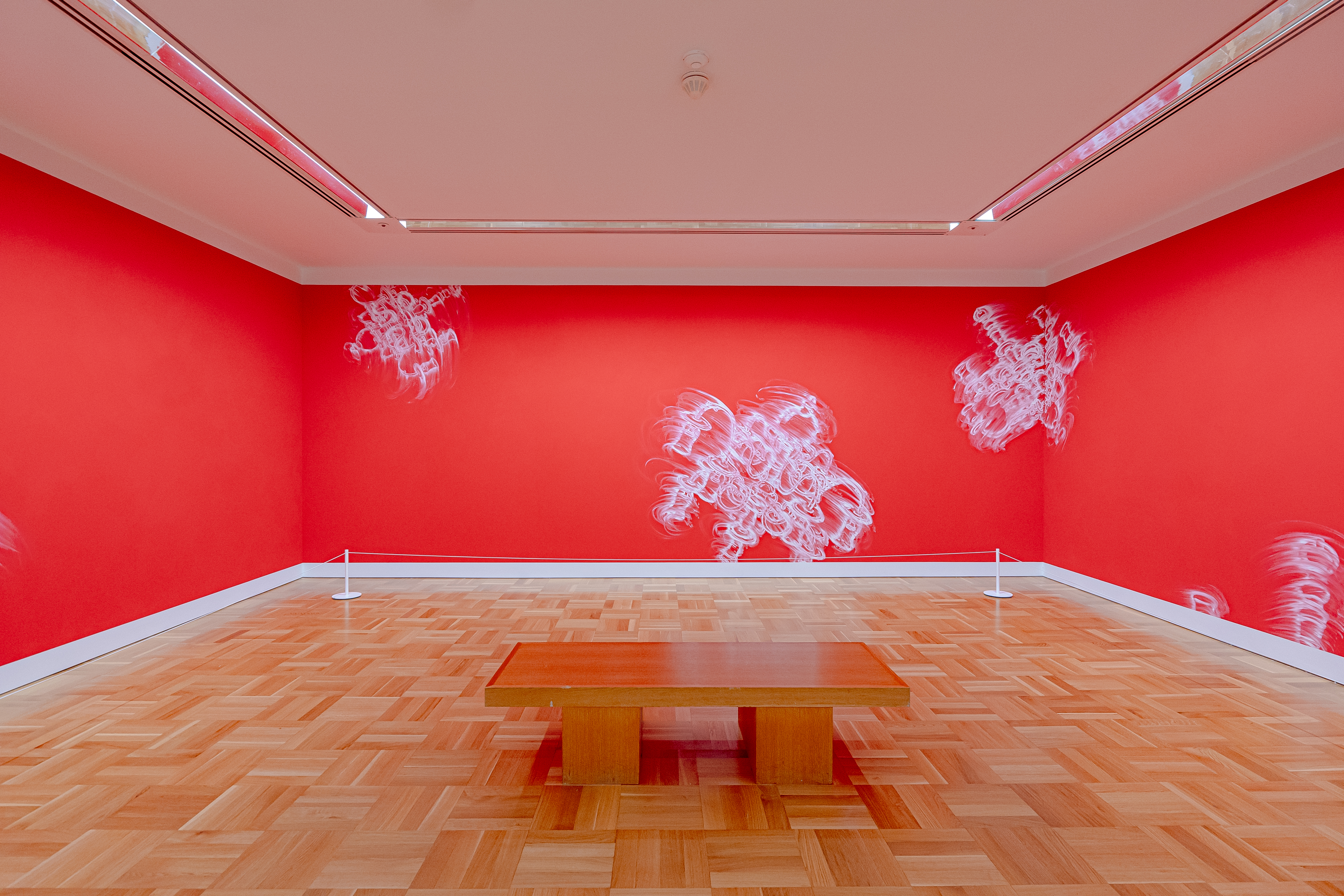 Leica CL · 11mm · f/5.6 · 1/30 ·
ISO 1250
Leica CL · 11mm · f/5.6 · 1/30 ·
ISO 1250
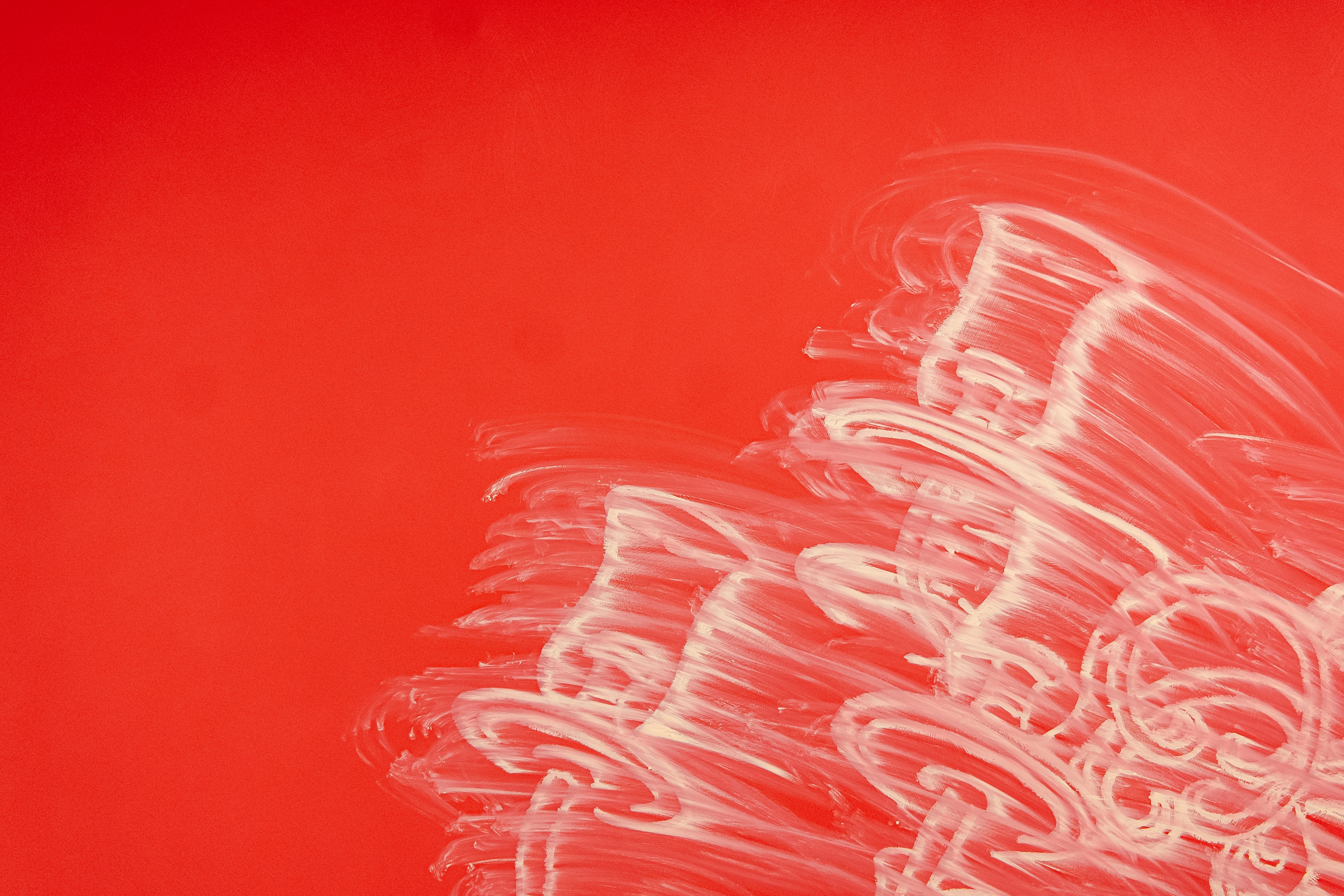 Leica CL · 15mm · f/5.6 · 1/40 ·
ISO 1600
Leica CL · 15mm · f/5.6 · 1/40 ·
ISO 1600
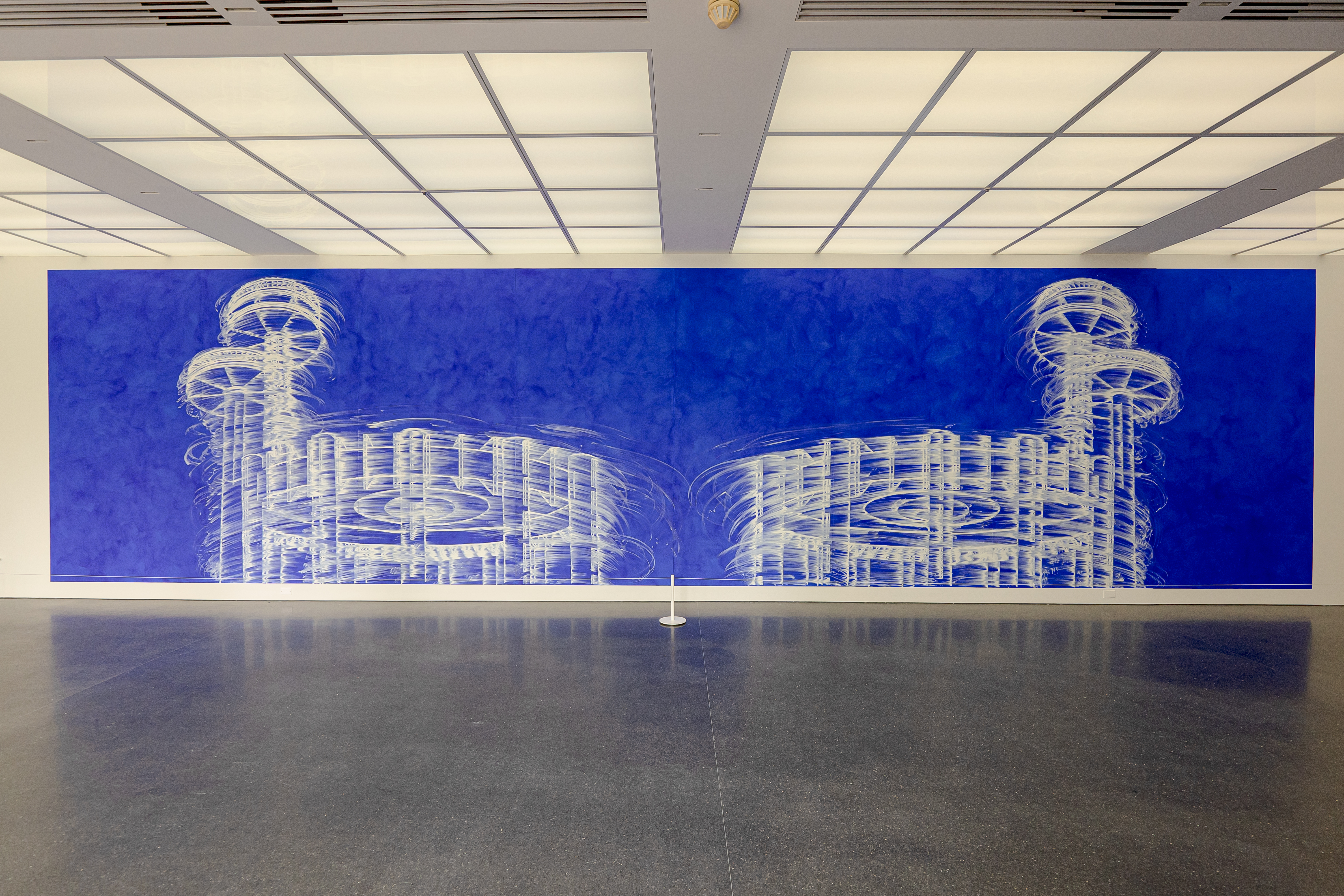 Leica CL · 11mm · f/5.6 · 1/30 ·
ISO 800
Leica CL · 11mm · f/5.6 · 1/30 ·
ISO 800
There was also a collection of his work in which he used items from popular culture like sneakers.
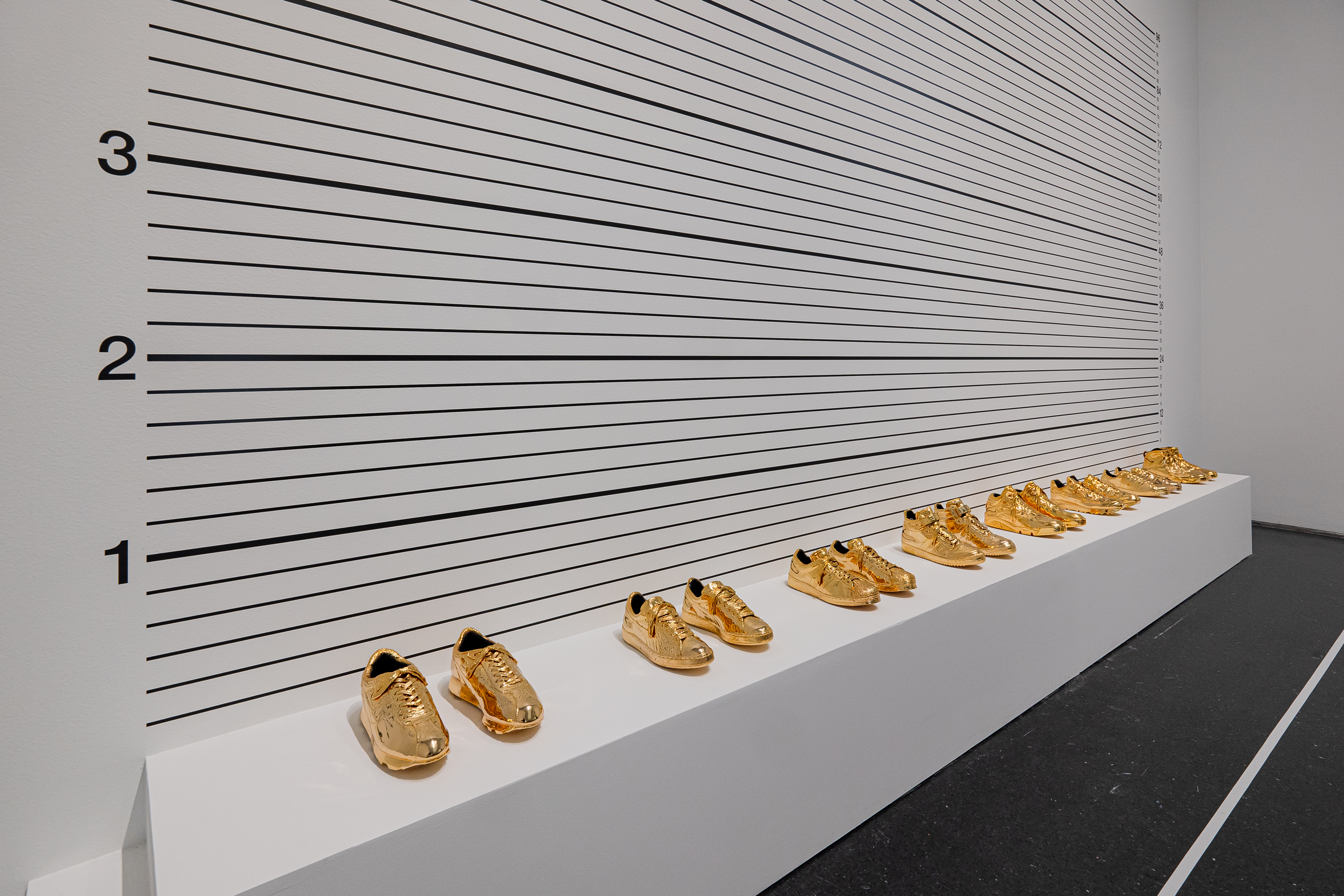 Leica CL · 11mm · f/5.6 · 1/30 ·
ISO 500
Leica CL · 11mm · f/5.6 · 1/30 ·
ISO 500
Central Camera
Far south of the Magnificent Mile near the Art Institute of Chicago lies one of America’s oldest camera stores — Central Camera. As a lover both of photography and history, I had to visit. The store has been in business since 1899, which it proudly displays on its vintage neon sign.
 Leica CL · 23mm · f/4.5 · 1/100 ·
ISO 100
Leica CL · 23mm · f/4.5 · 1/100 ·
ISO 100
Unfortunately, it was looted and nearly completely destroyed during the civil unrest of 2020. The inside still has the feeling of an old photo store. I loved the boxes of miscellaneous items like filters and lens hoods.
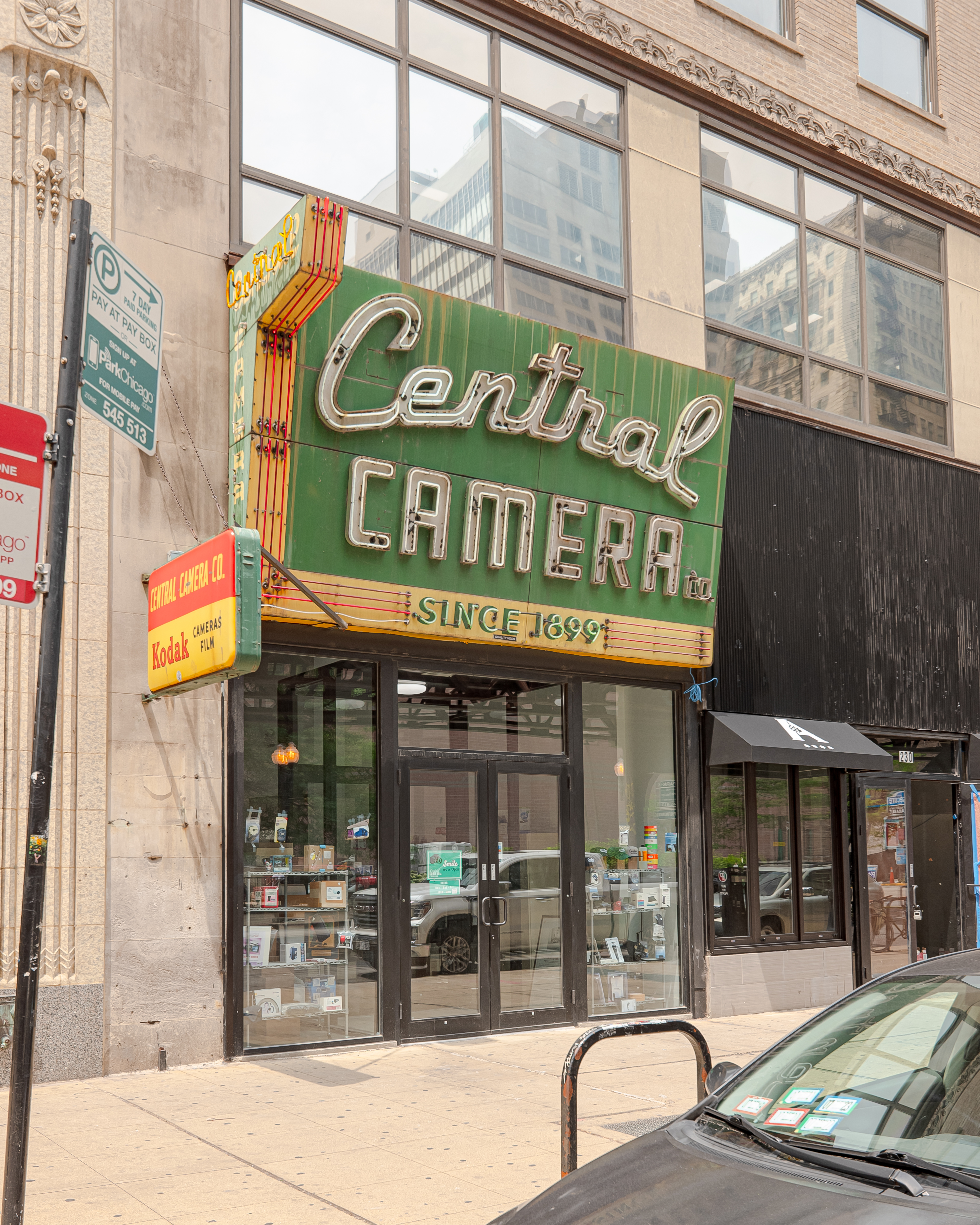 Leica CL · 19mm · f/4.3 · 1/160 ·
ISO 100
Leica CL · 19mm · f/4.3 · 1/160 ·
ISO 100
When I bought myself a t-shirt, the staff used an antiquated process of filling out a paper invoice even though I paid with Apple Pay.
I hope that Central Camera and similar old camera stores can continue operating. As people get back into film and realize the value of old cameras, these stores provide a unique service to the community. Not only do the staff provide guidance on what gear to buy, but they also have knowledge on where to get cameras fixed.
Next time
My visit to Chicago was short and mostly focused on work, but I’m happy I had the chance to sample a bit of its architecture and art. I hope to be back soon as there is still so much I’d like to see like the Field Museum and many of the most important works of Frank Lloyd Wright.
Camera setup
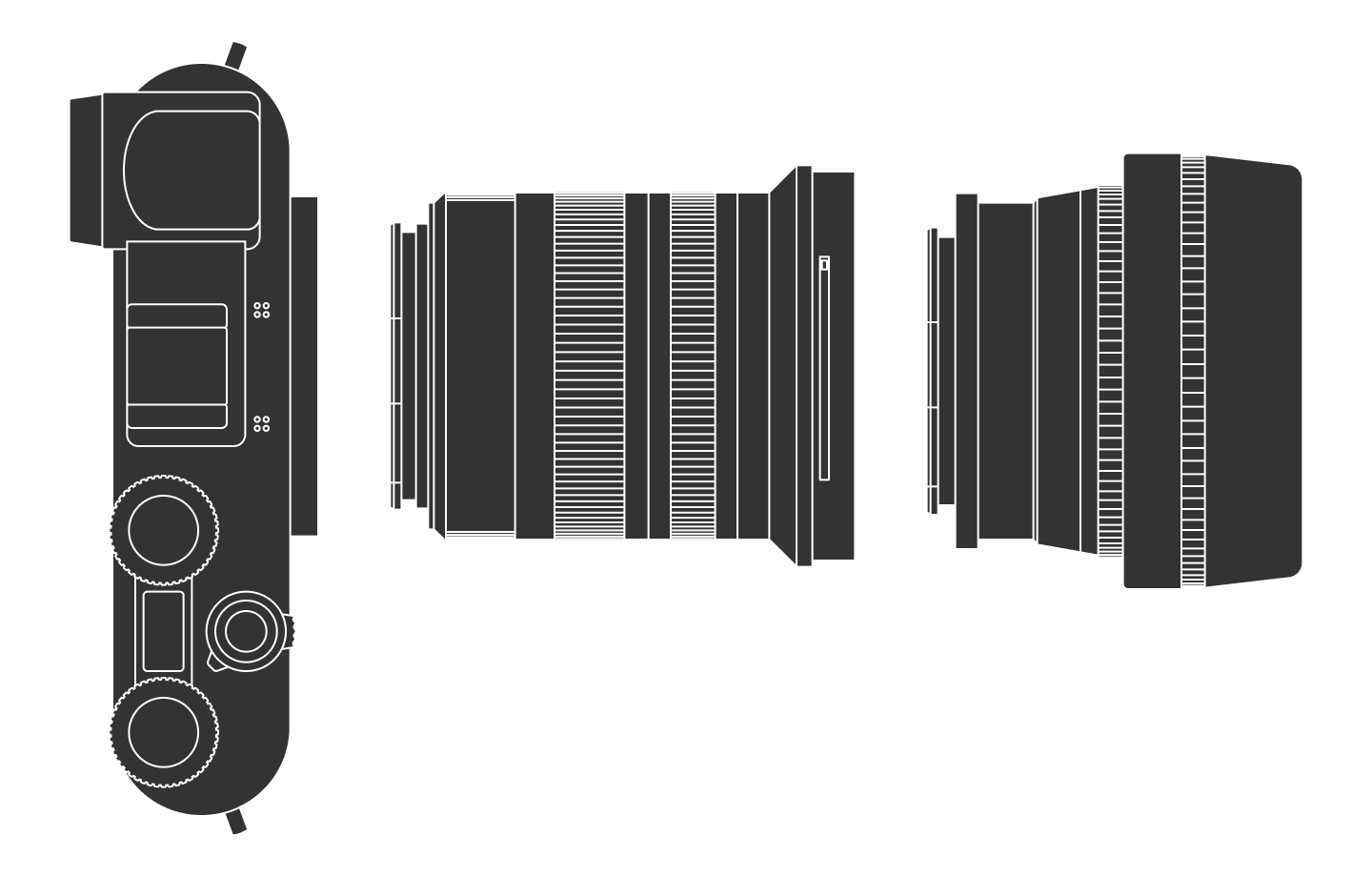
Thanks to Q for reading drafts of this.